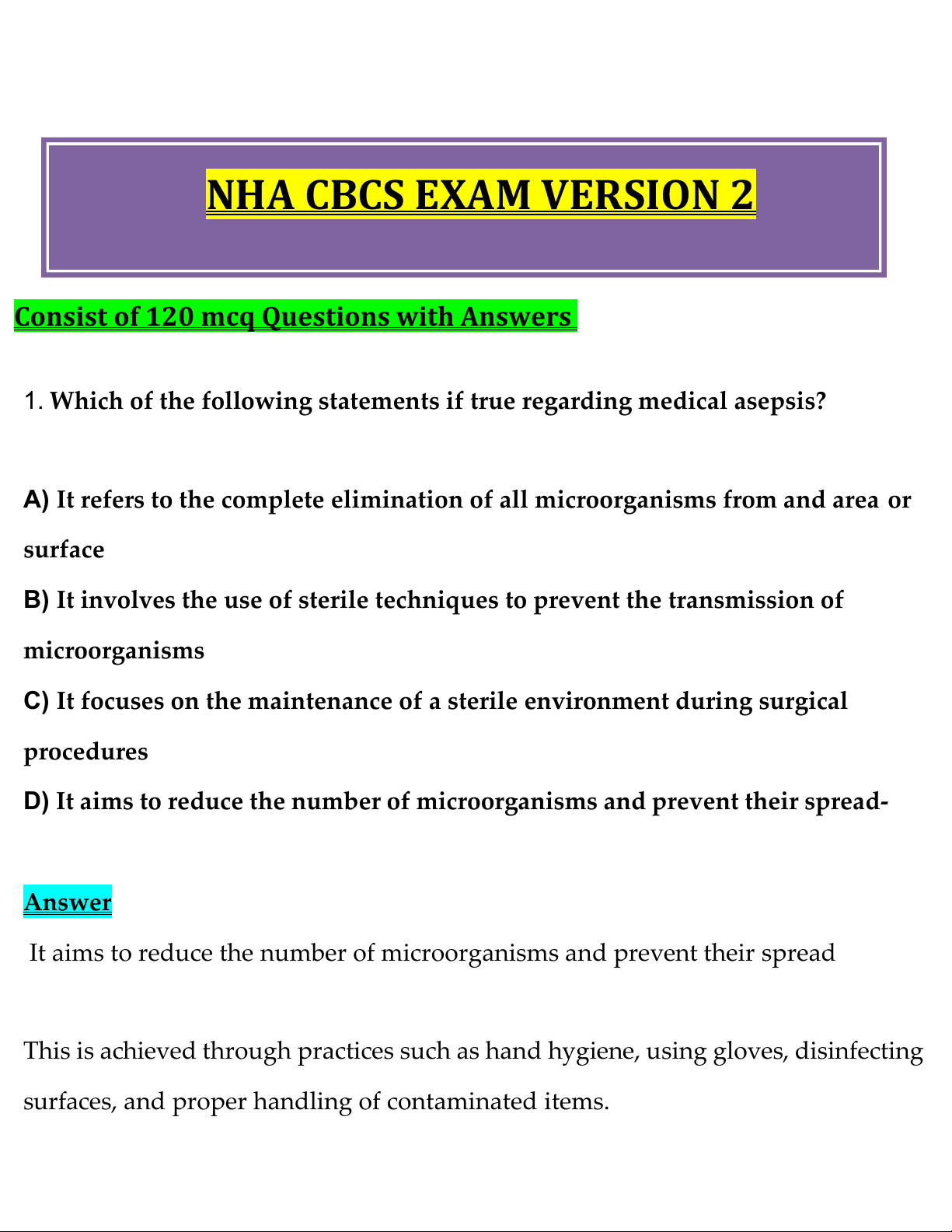
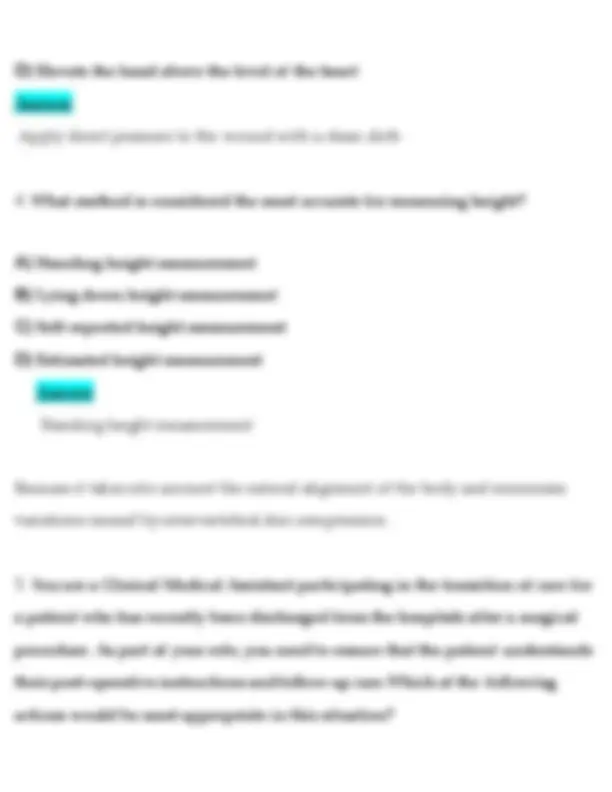
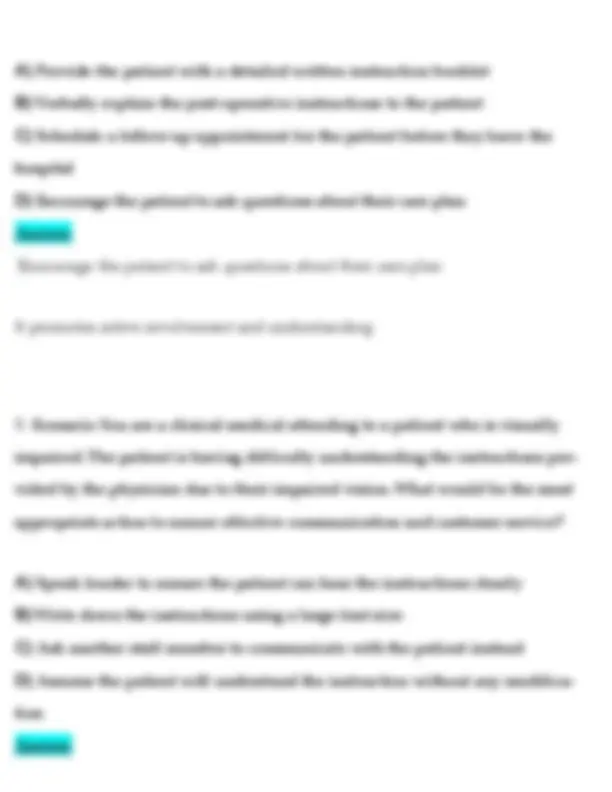
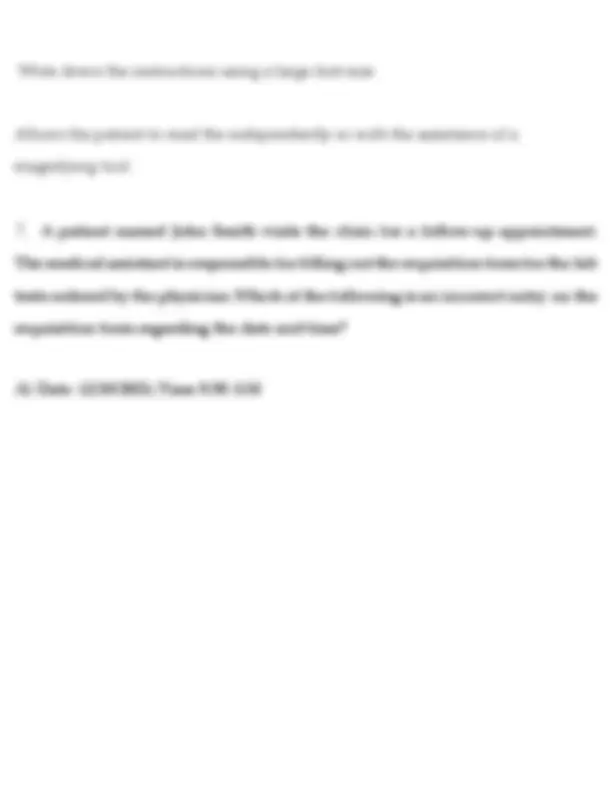
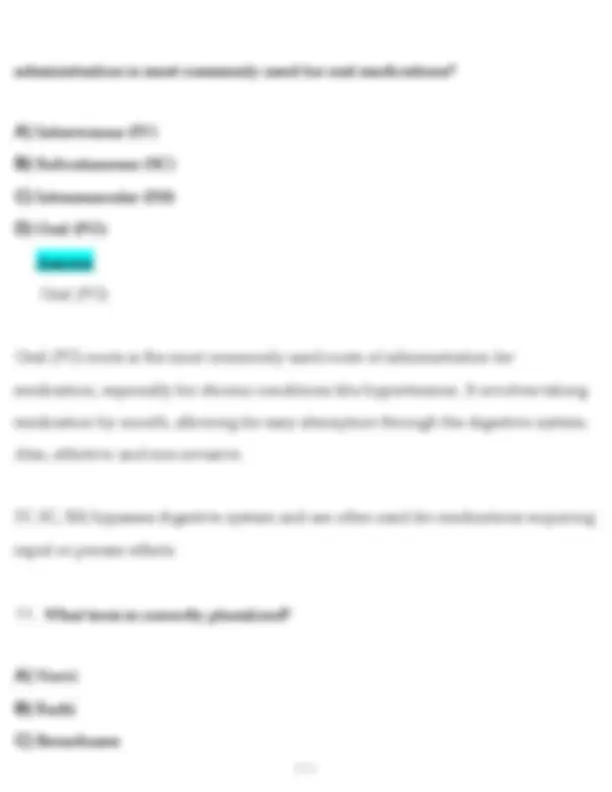
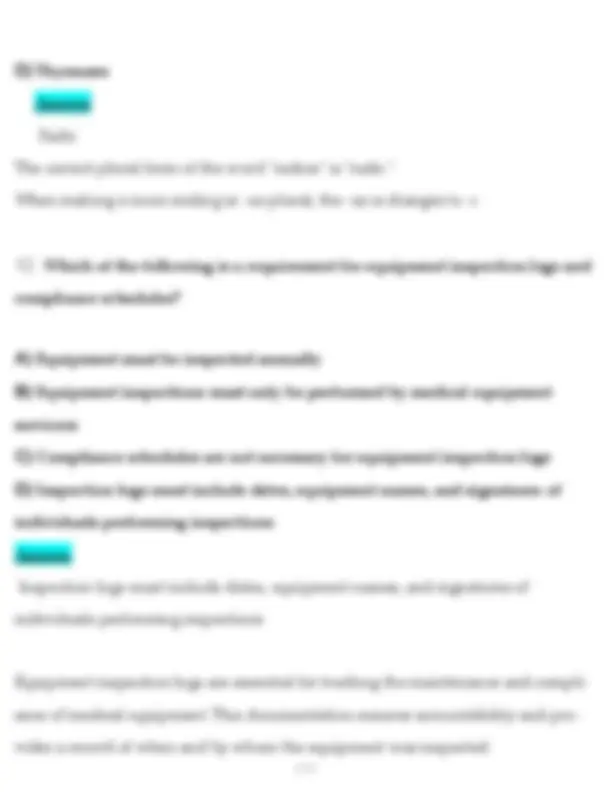
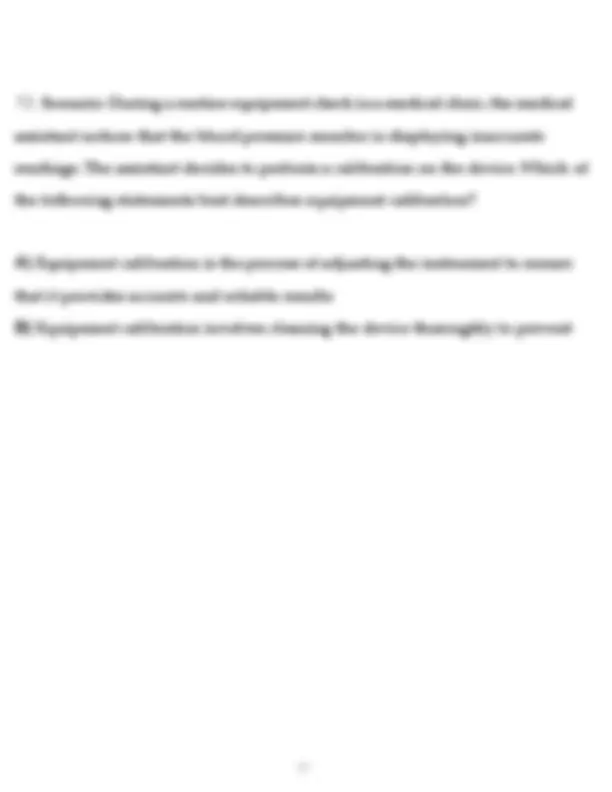
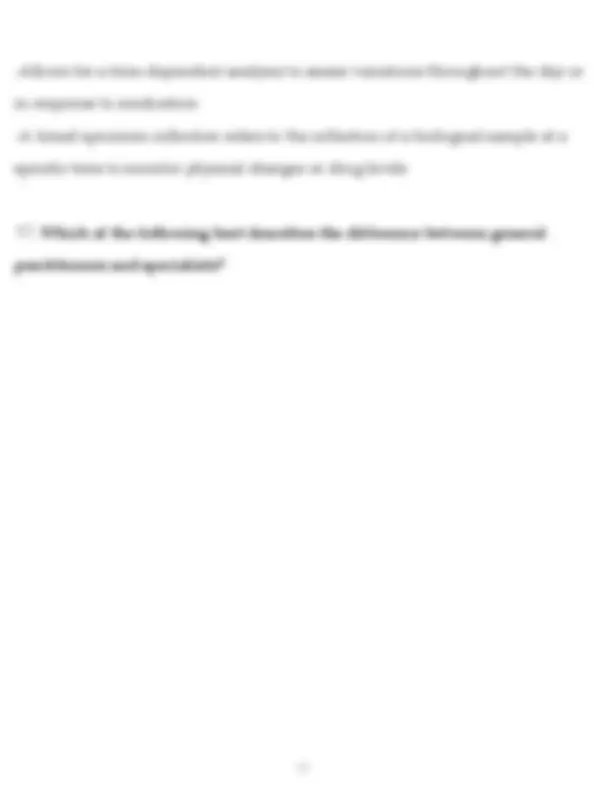
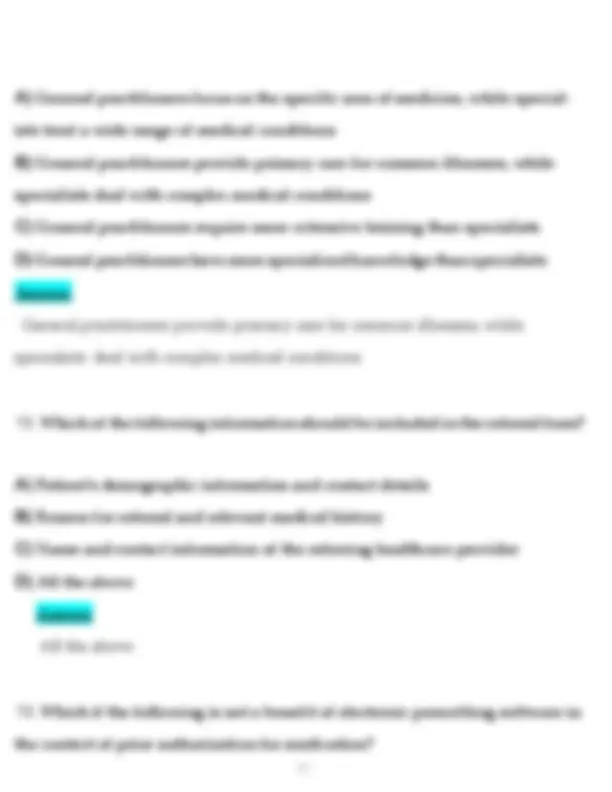
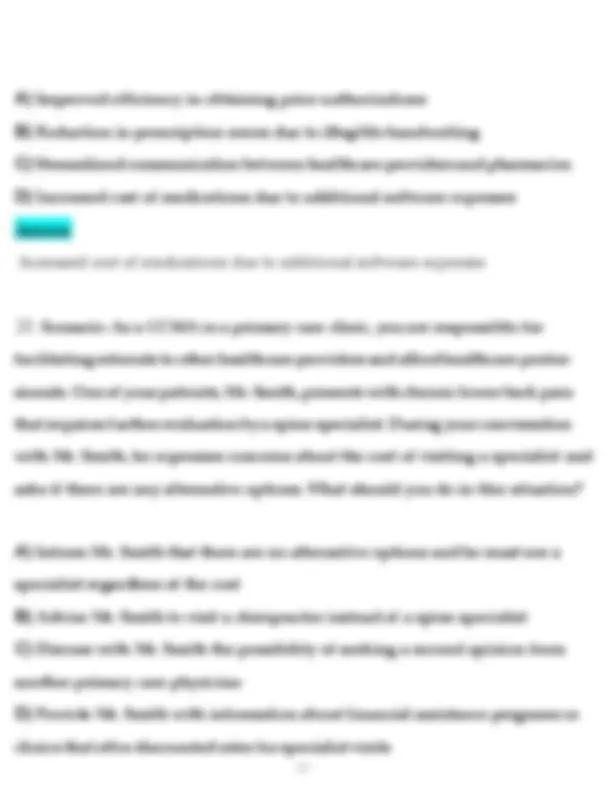
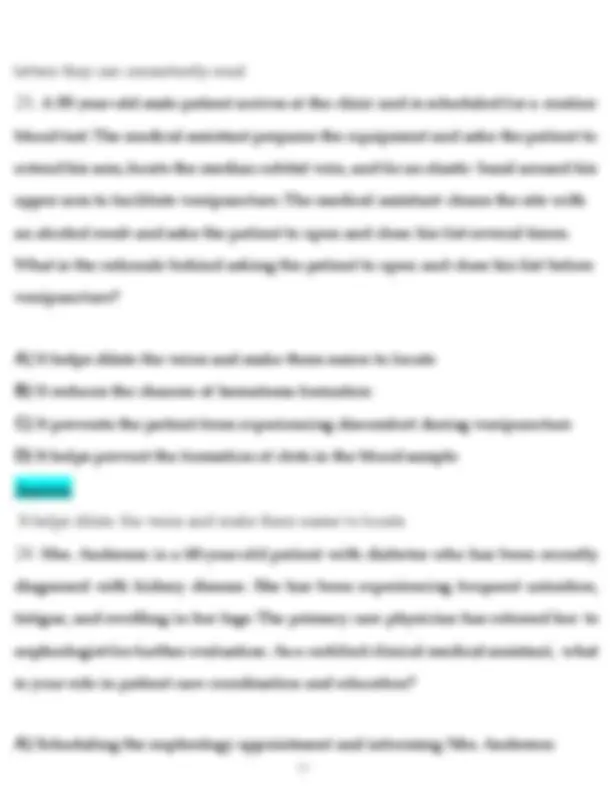
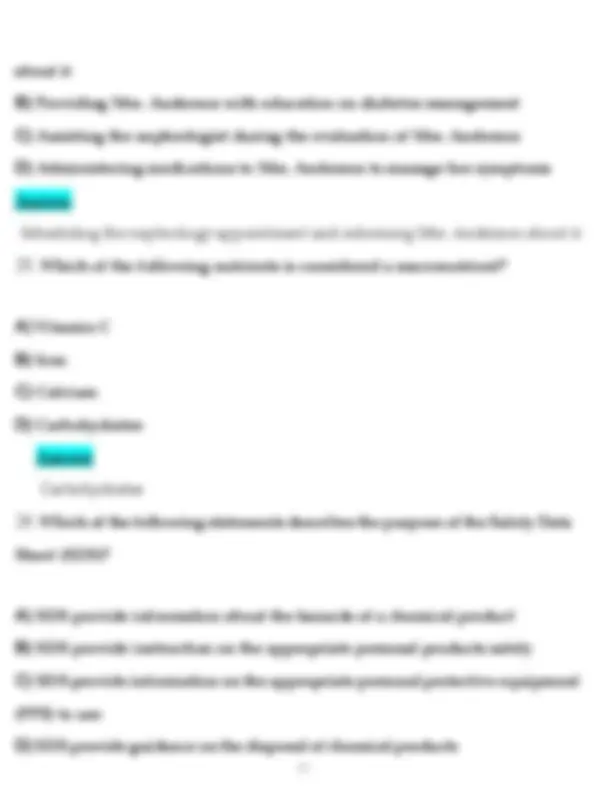
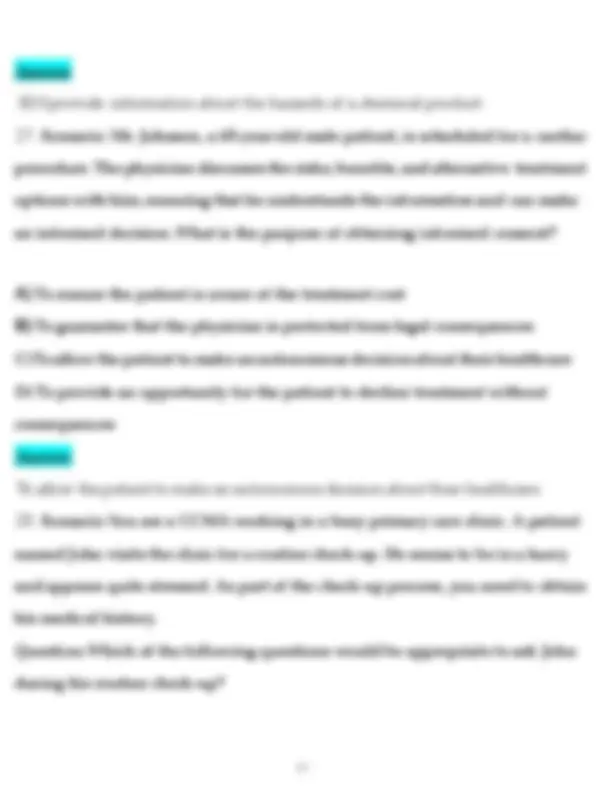
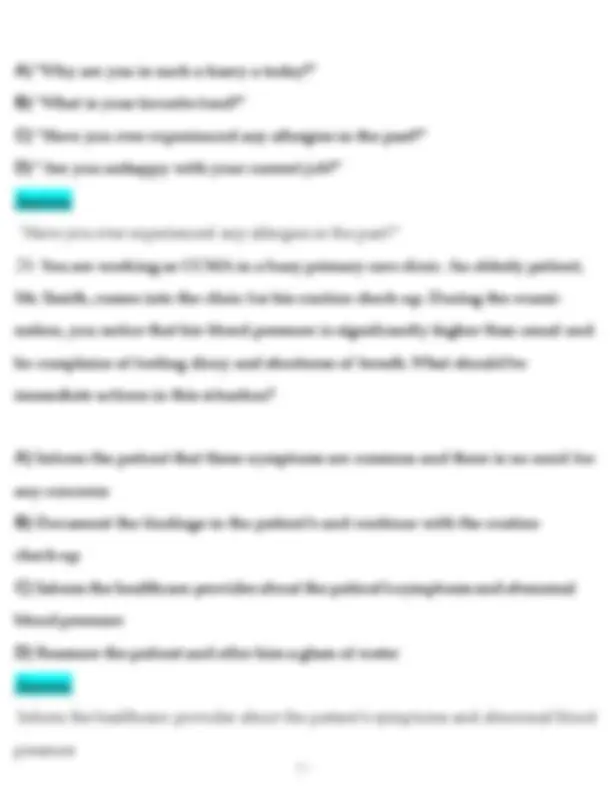
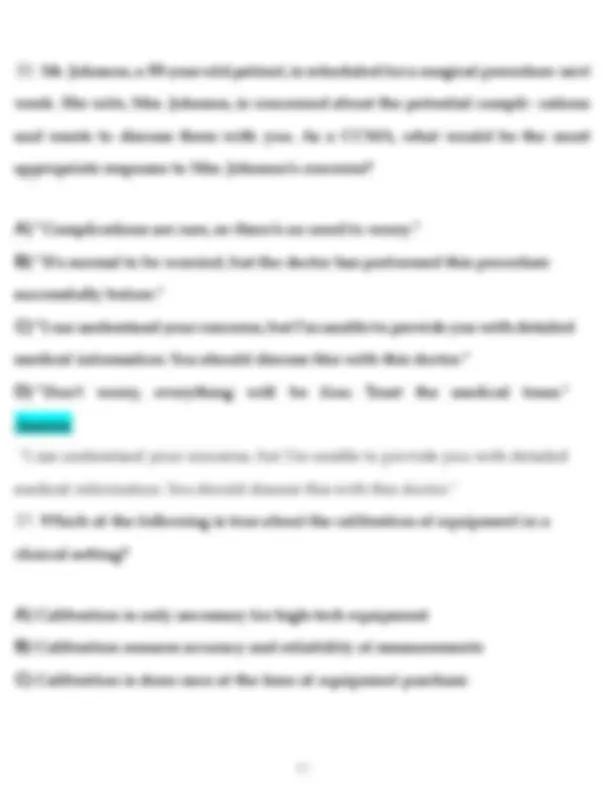
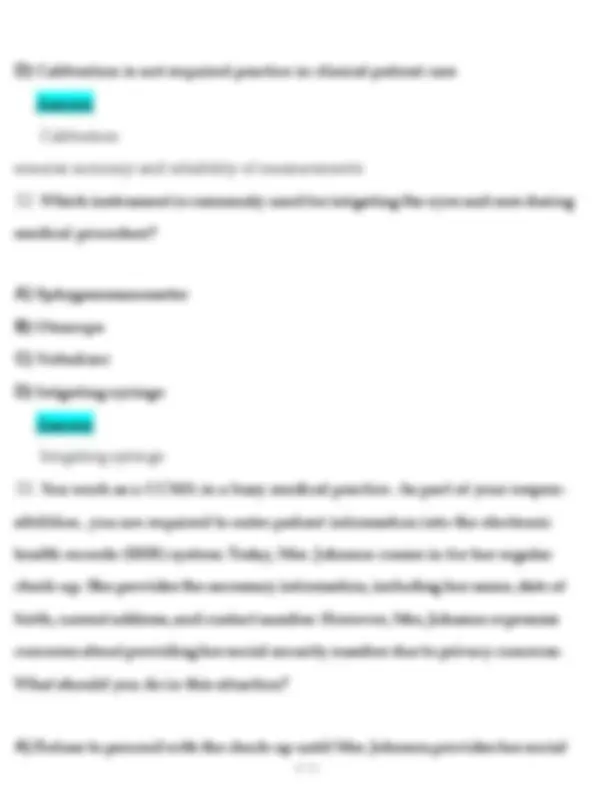
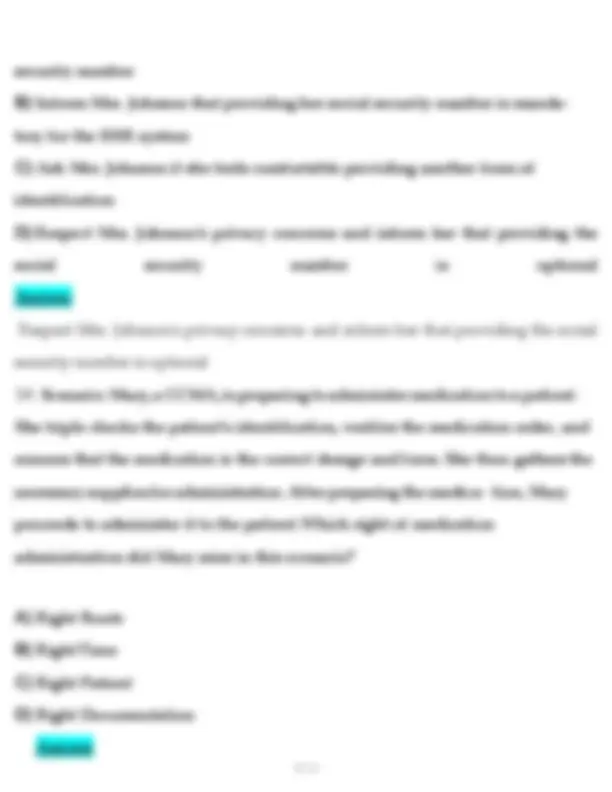

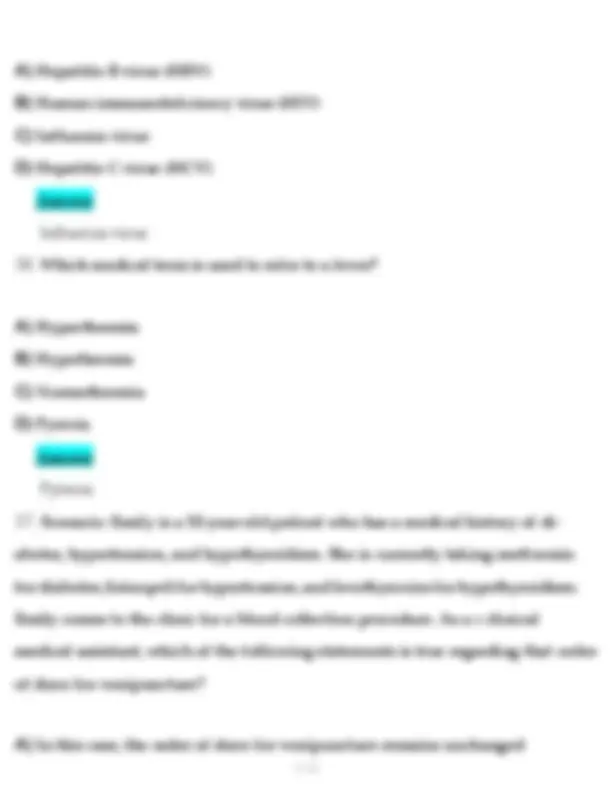
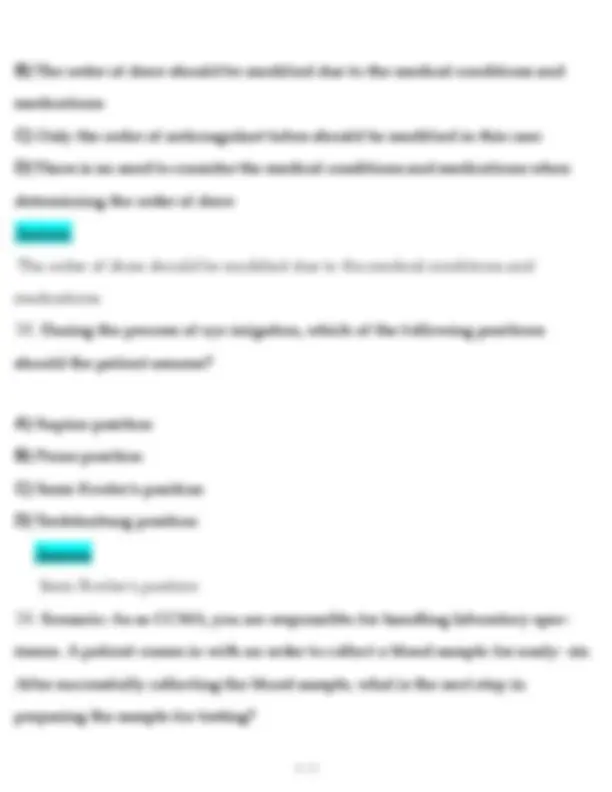
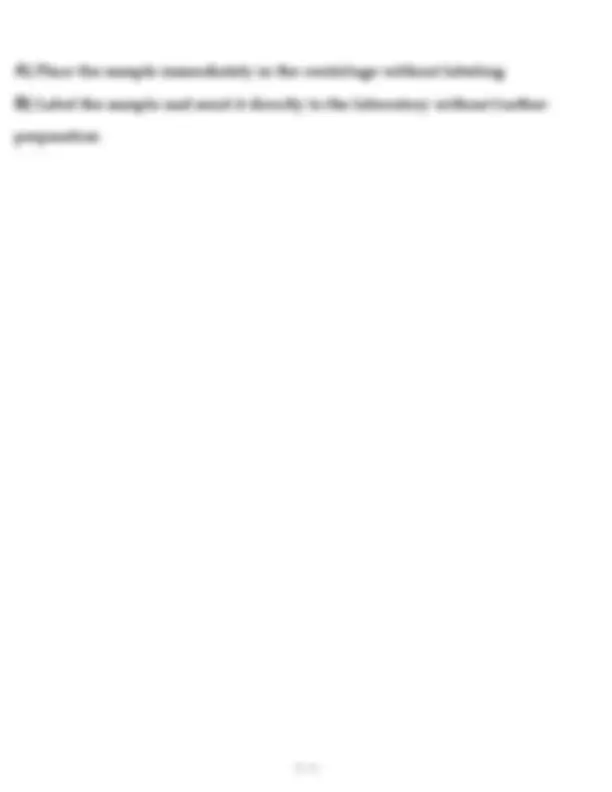
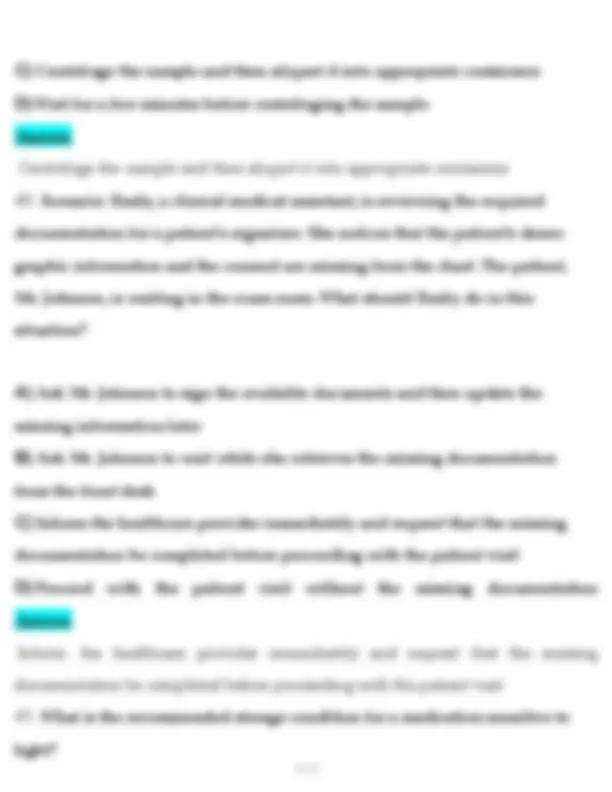
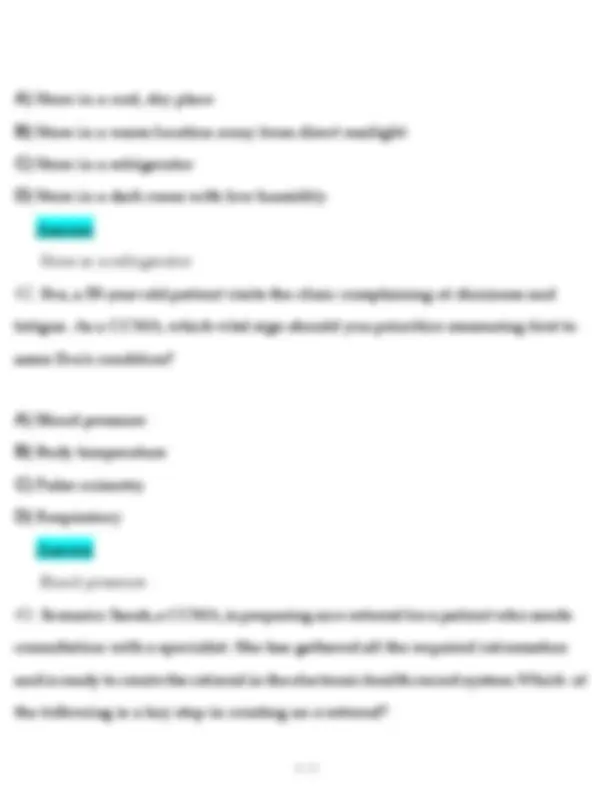


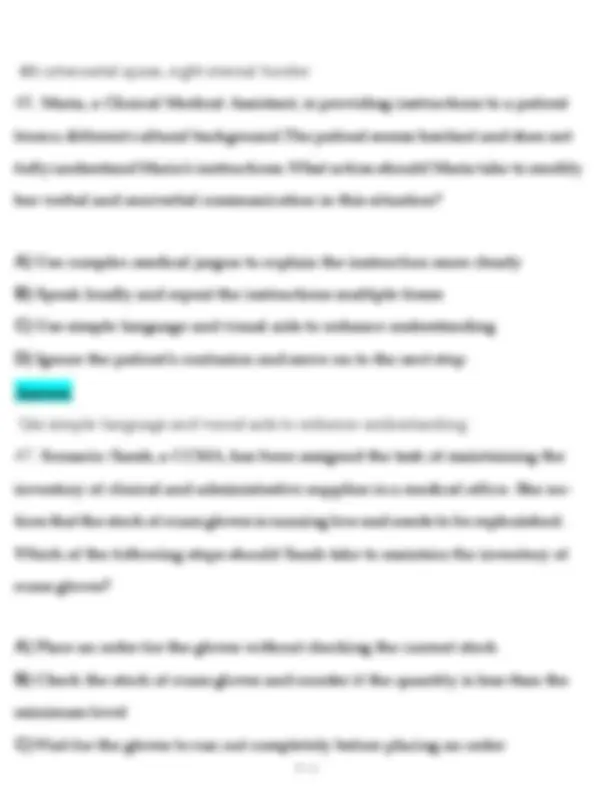
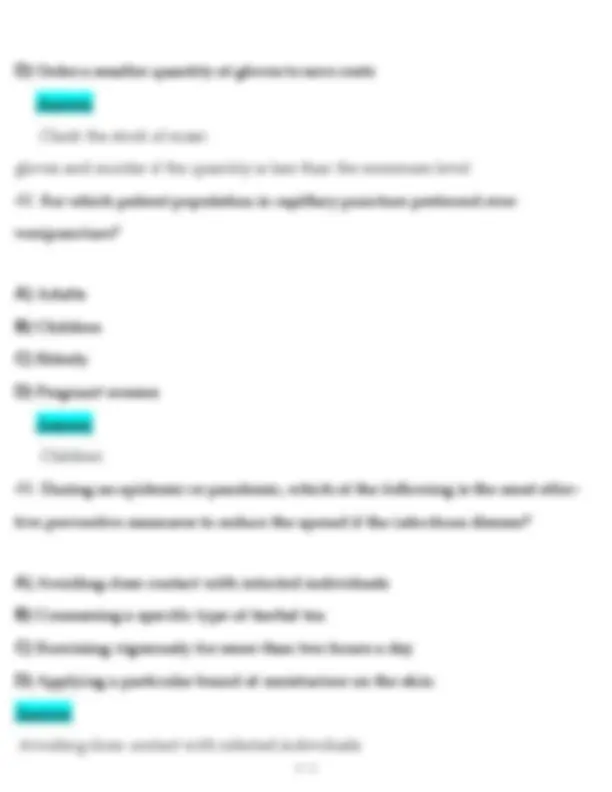
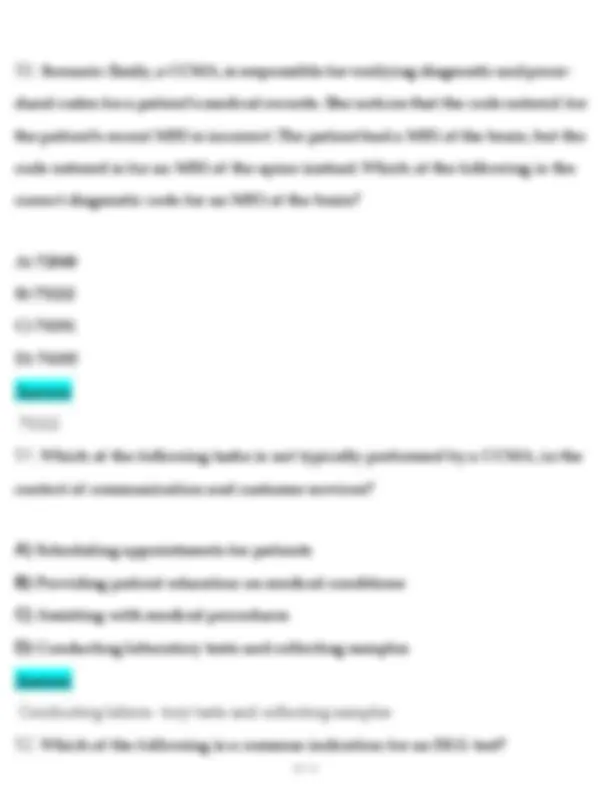

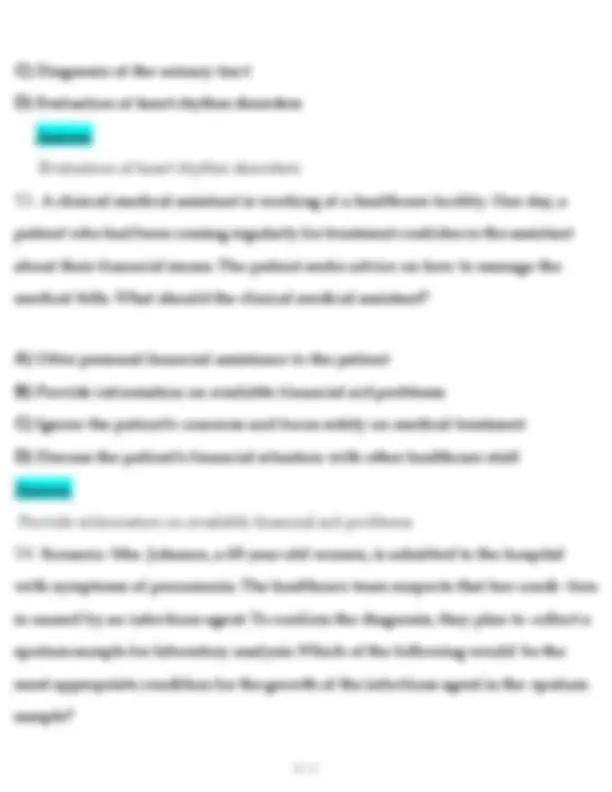
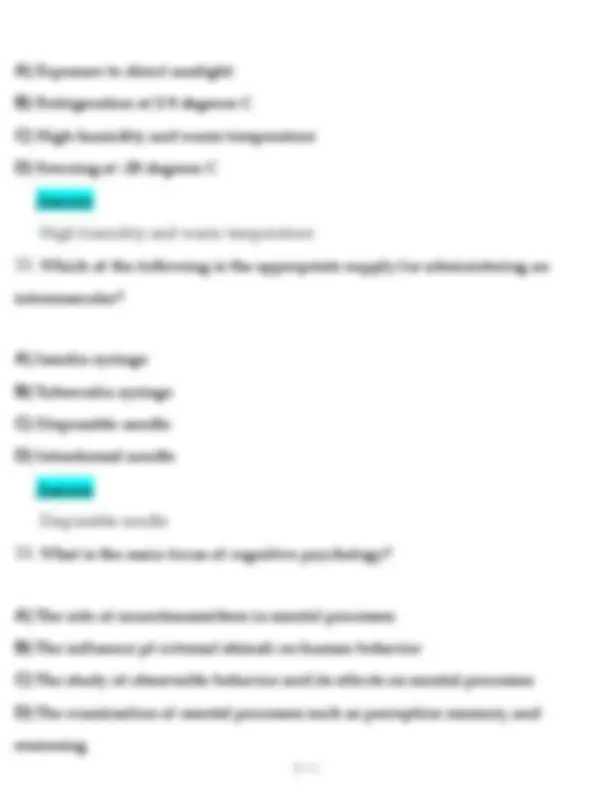

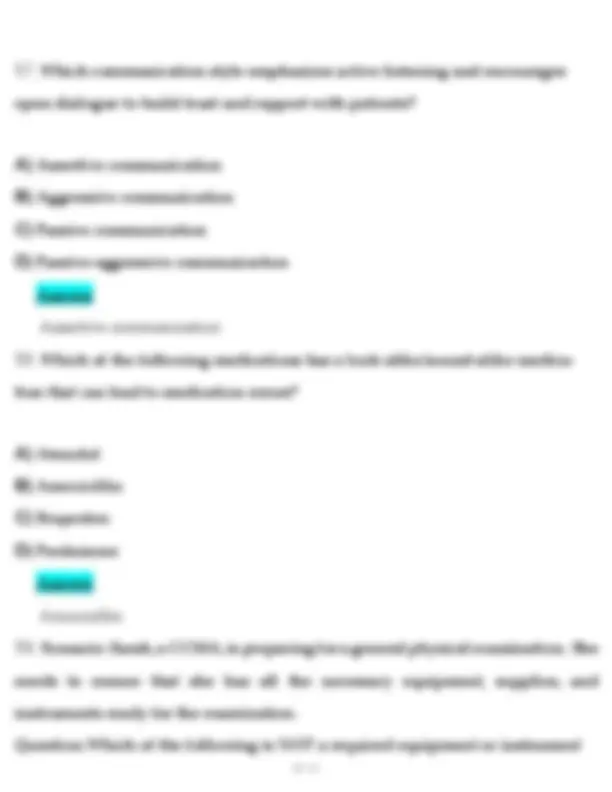
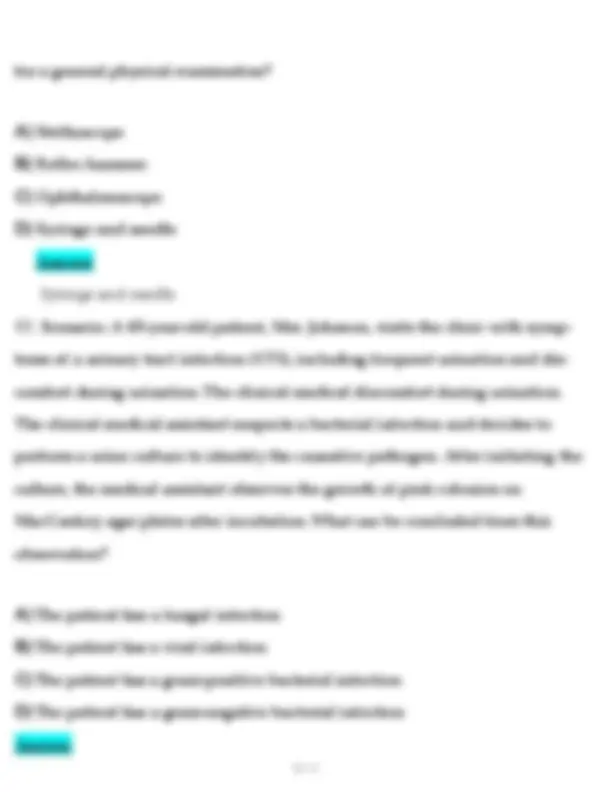

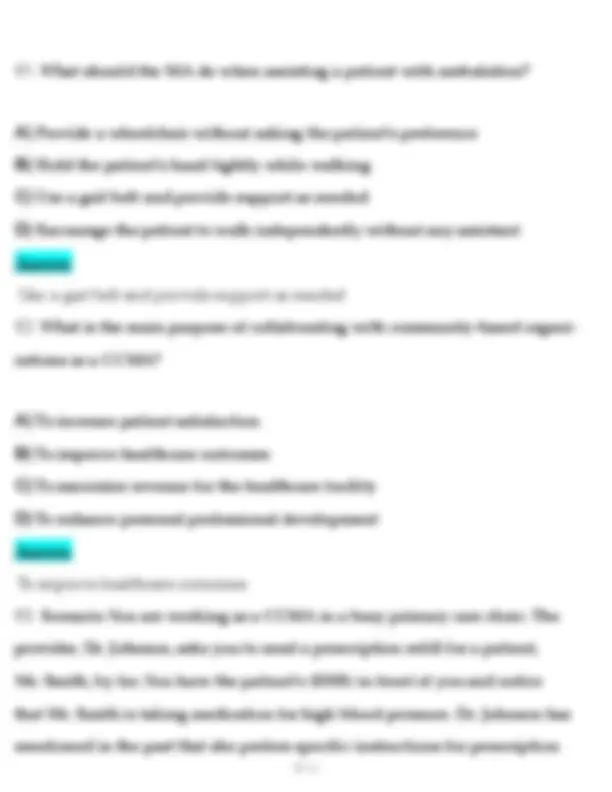
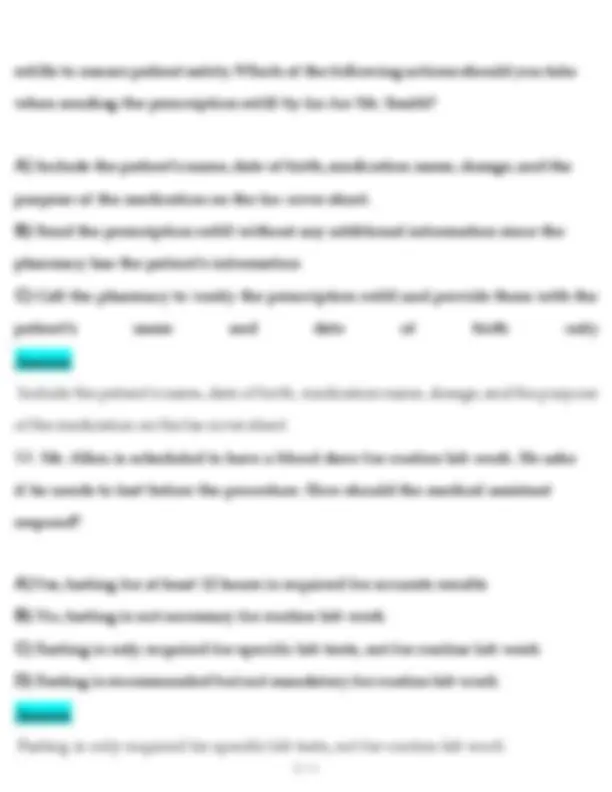
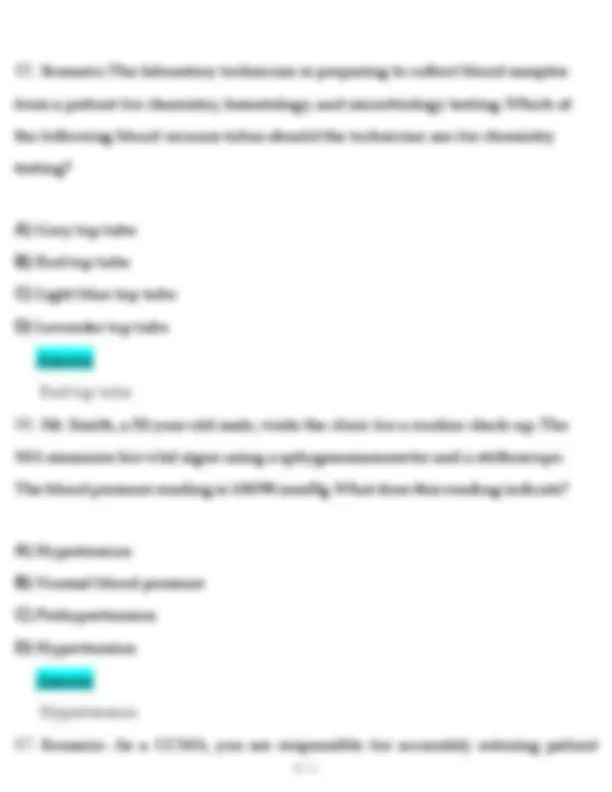
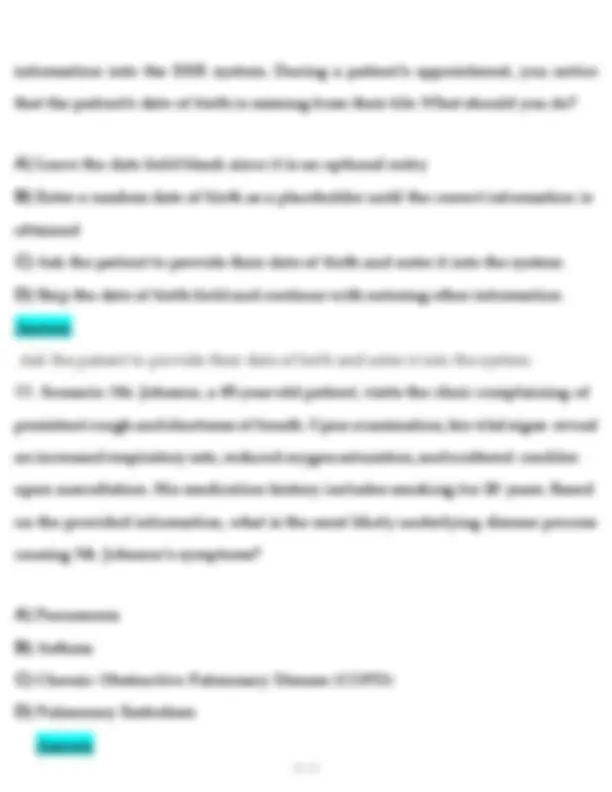

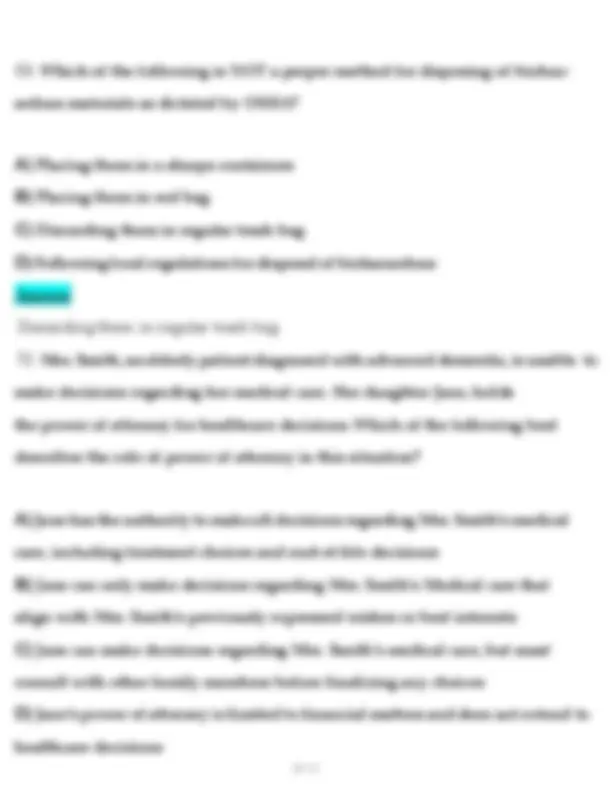
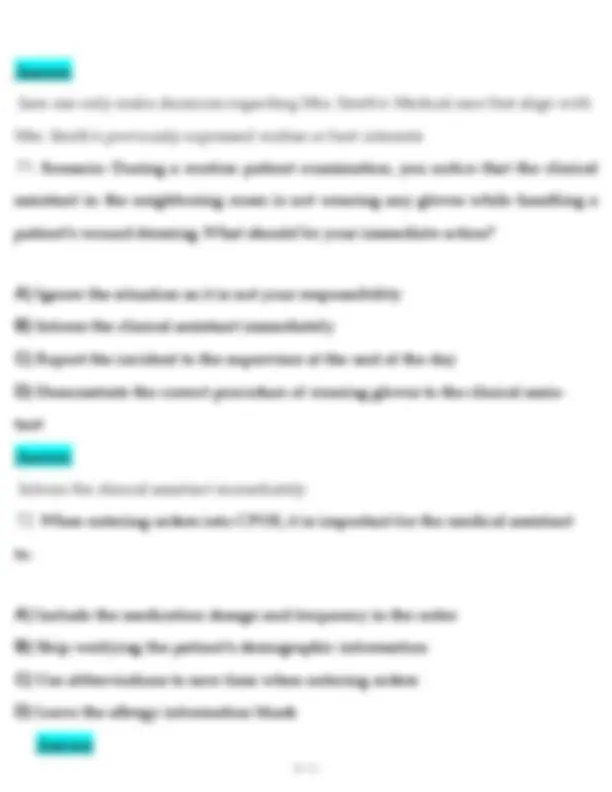

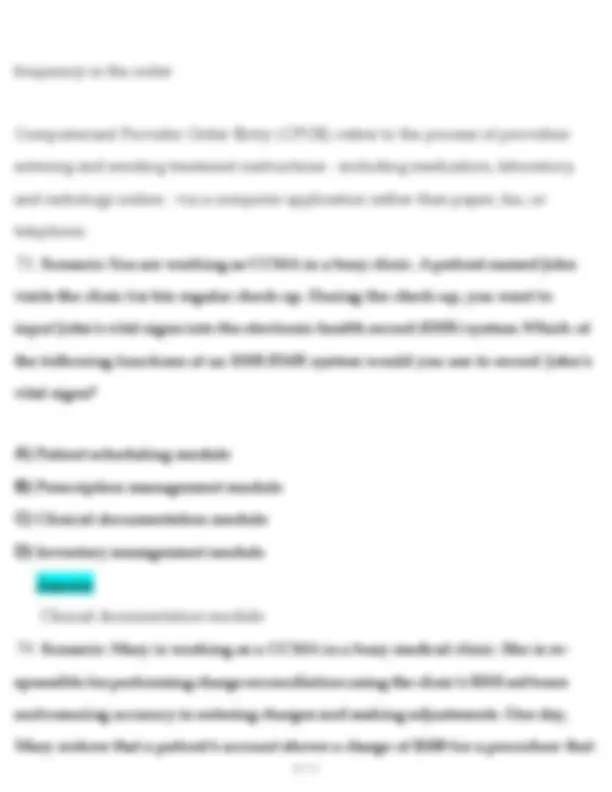
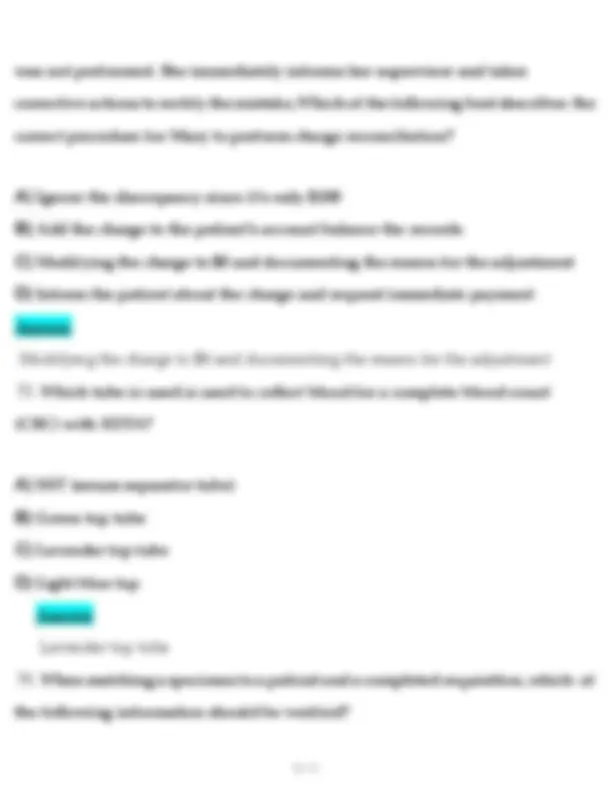

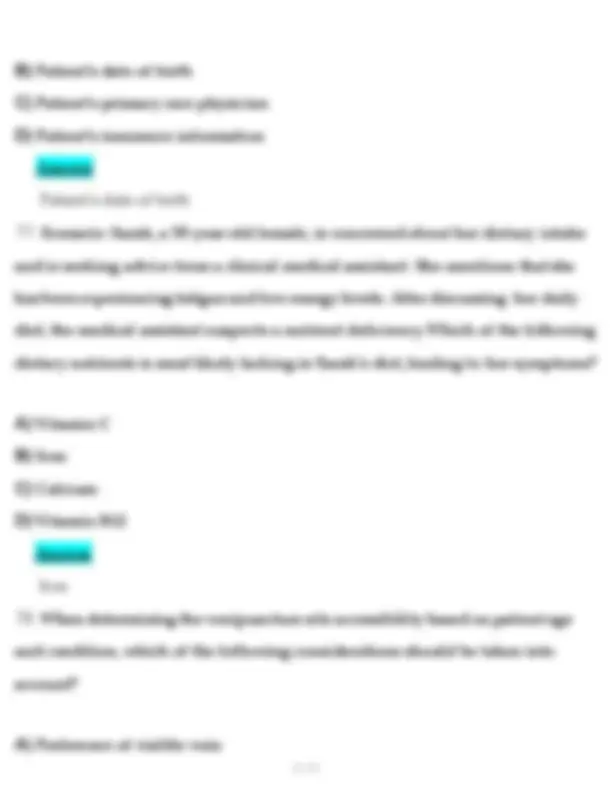
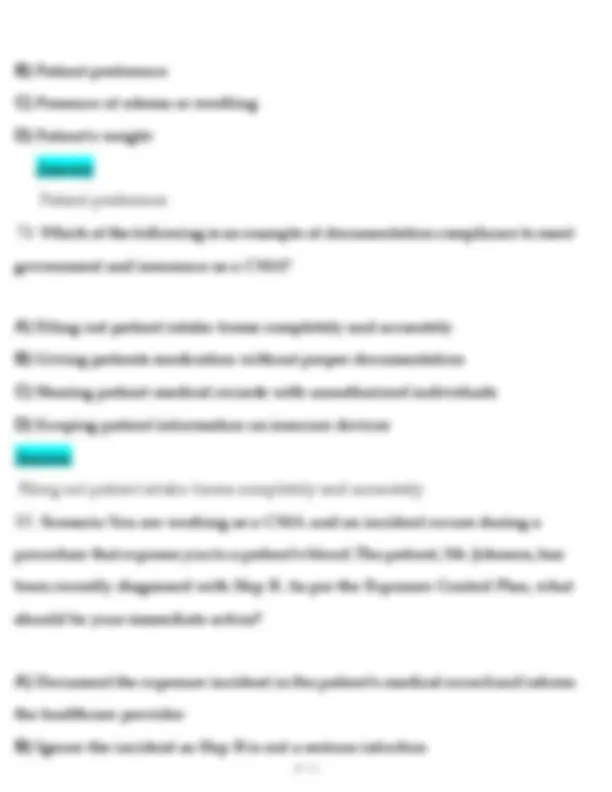

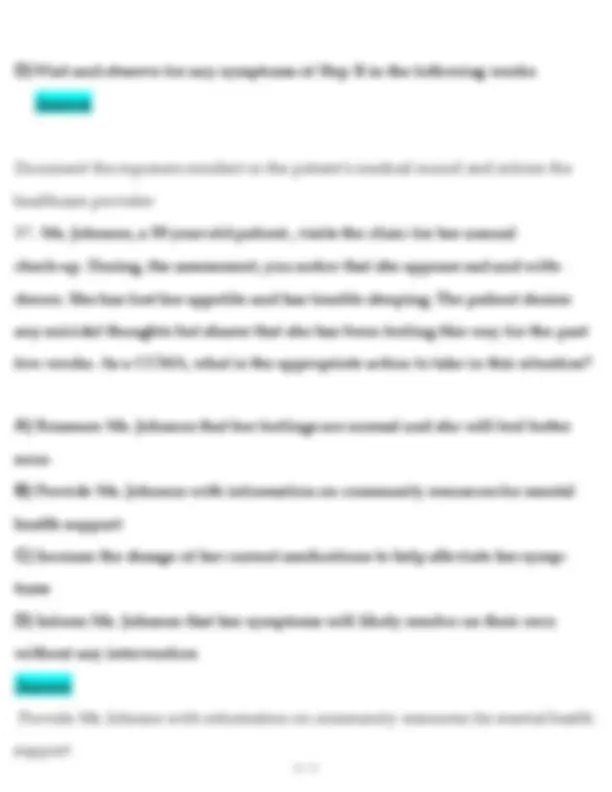
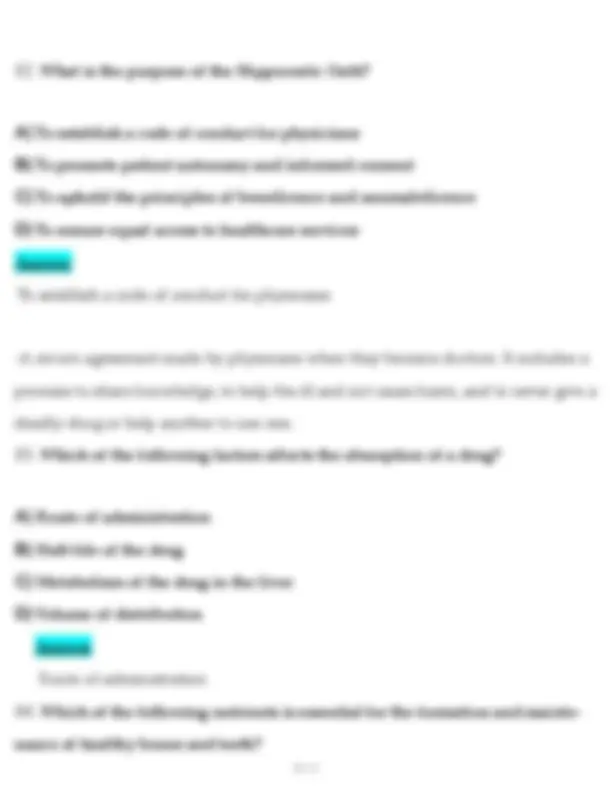
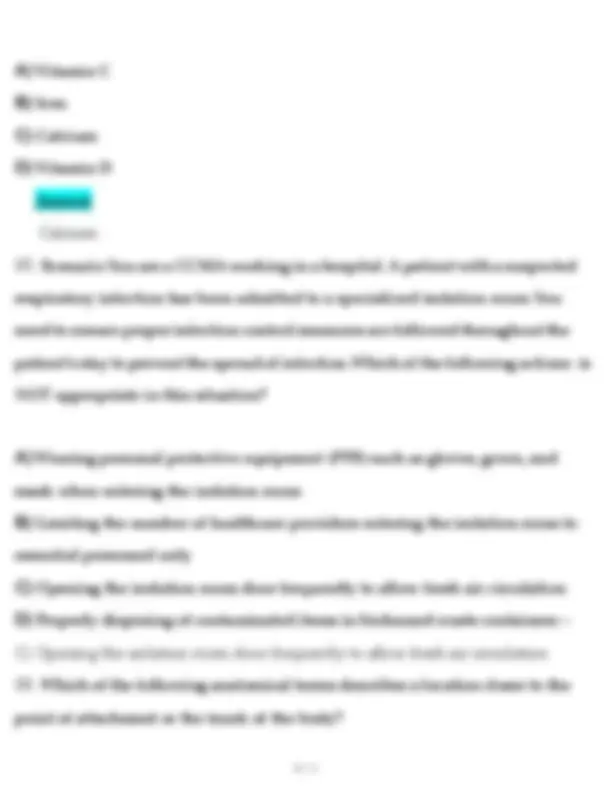
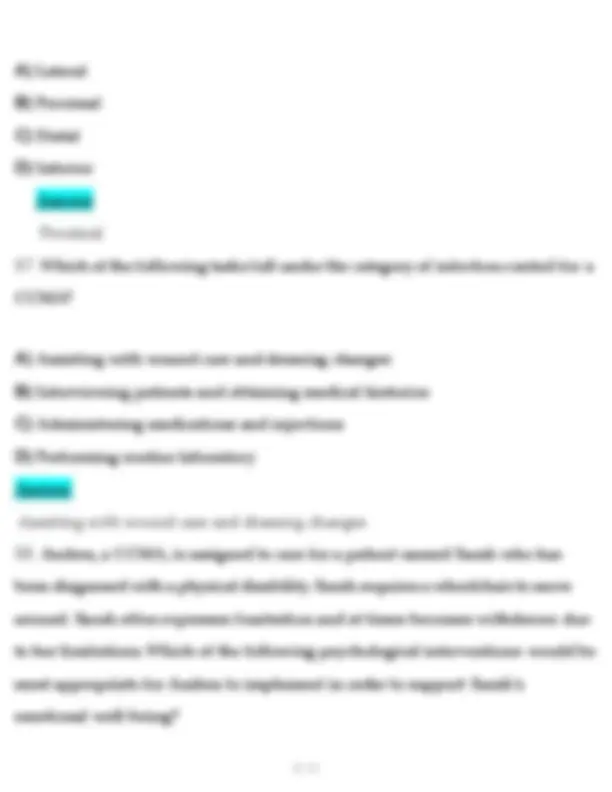
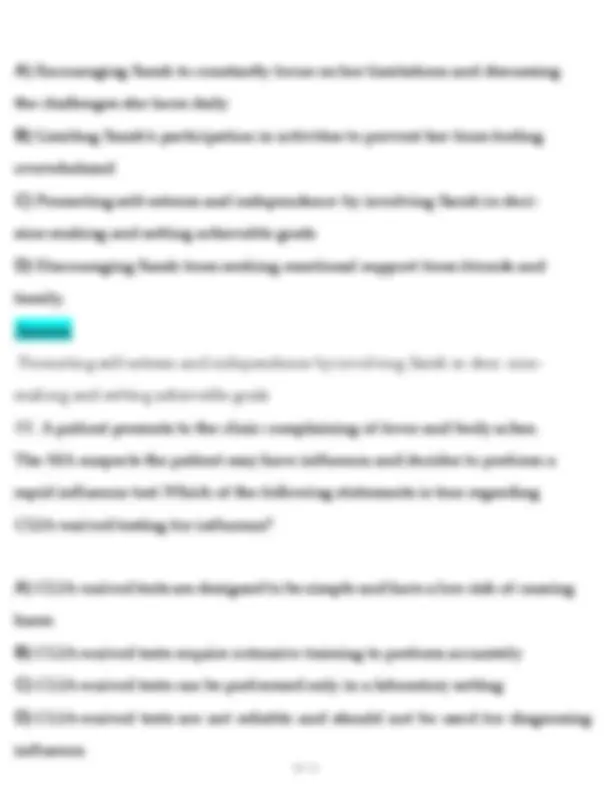
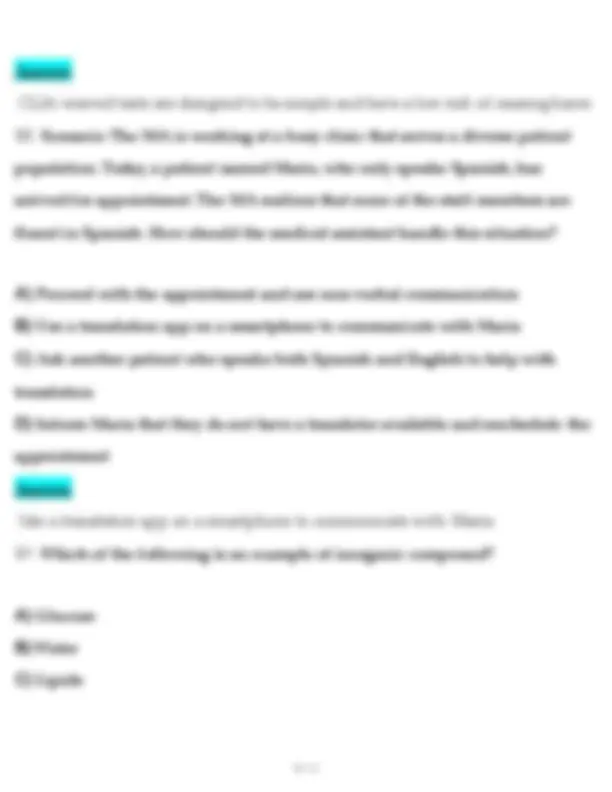
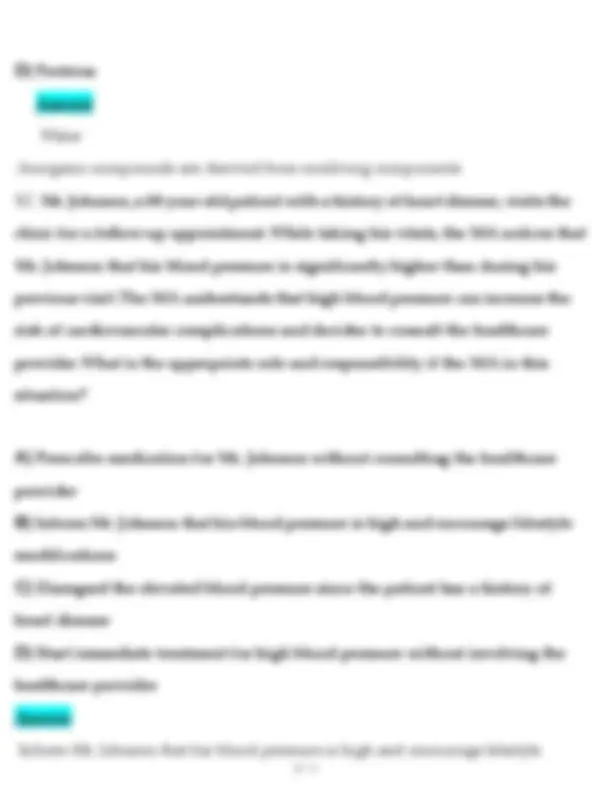
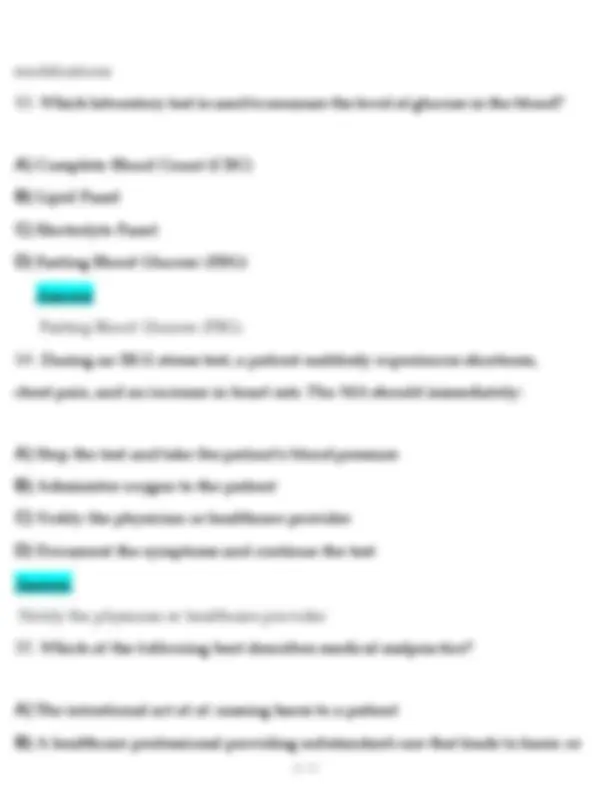
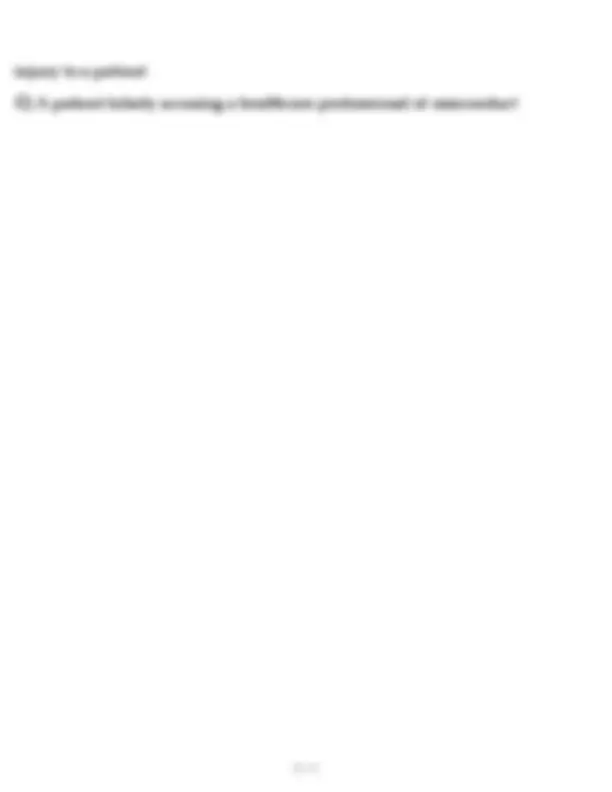
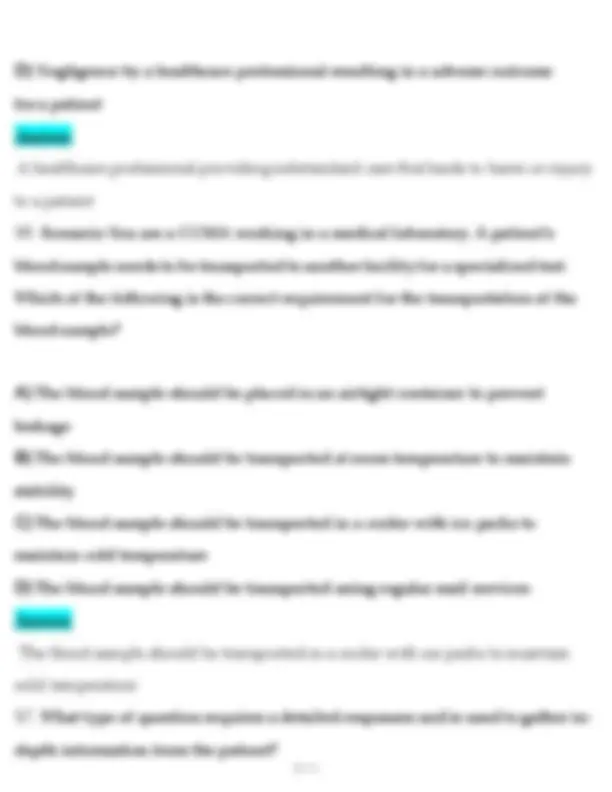
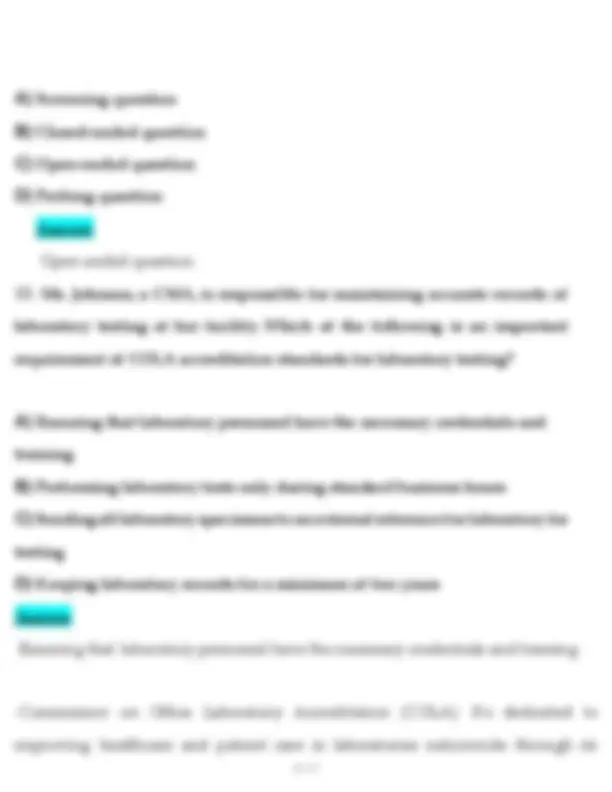

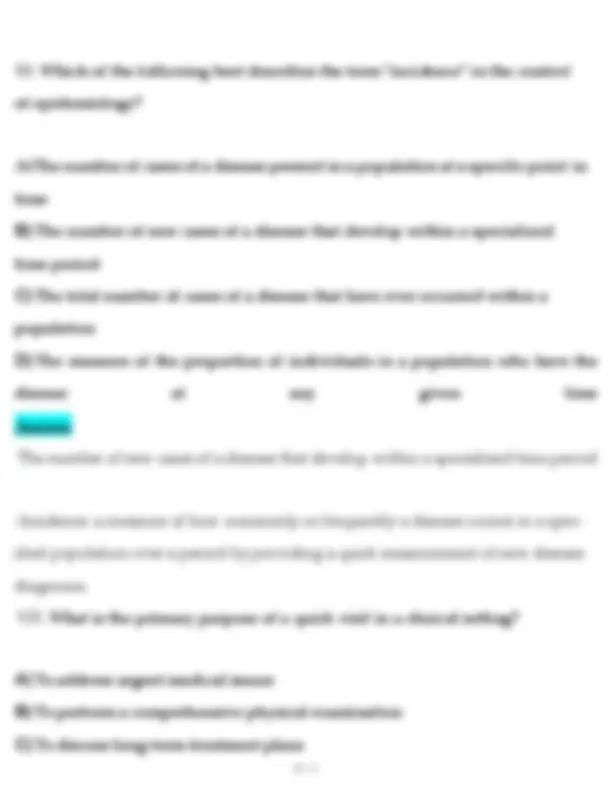
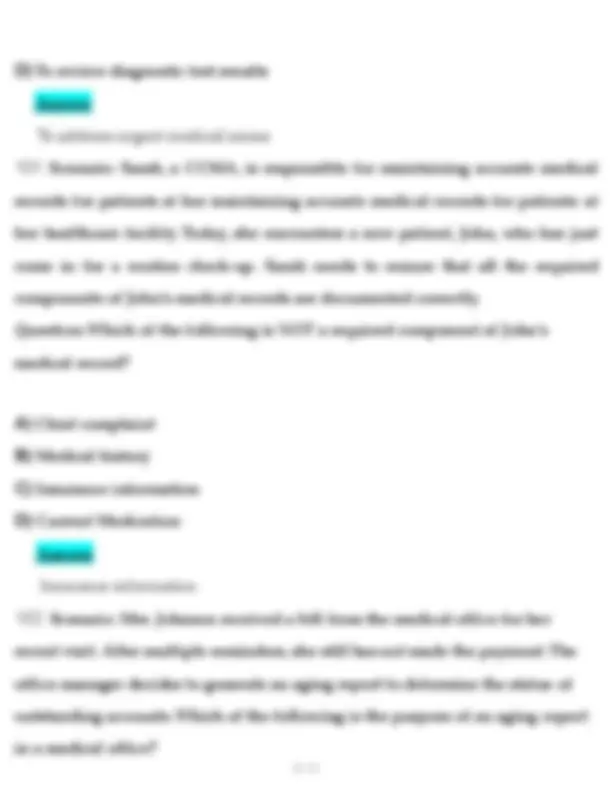
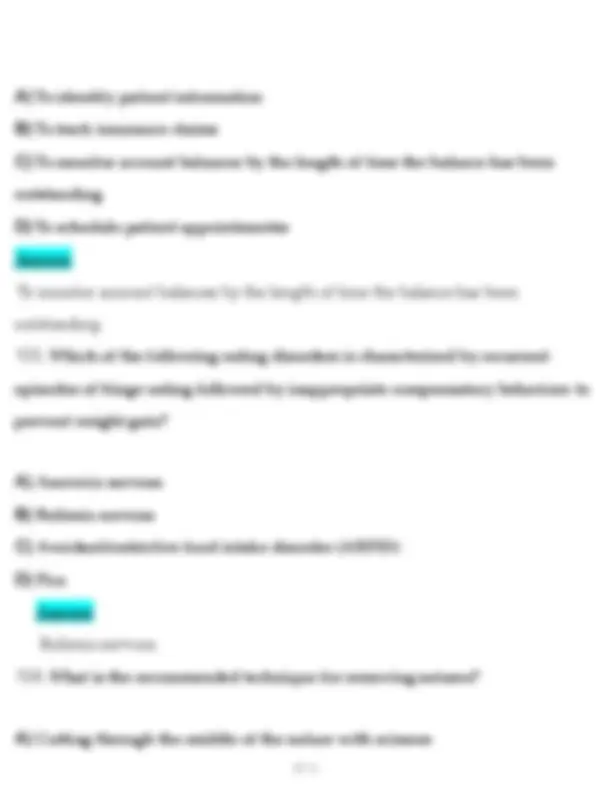
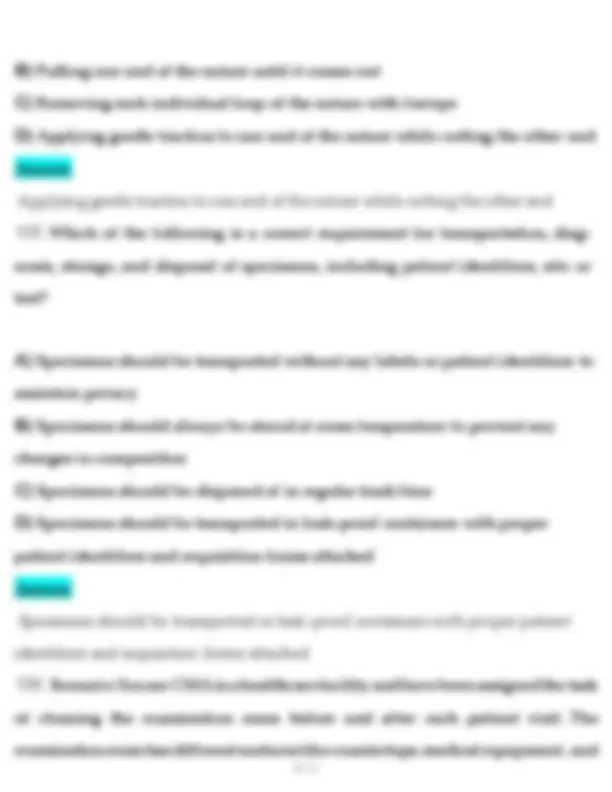

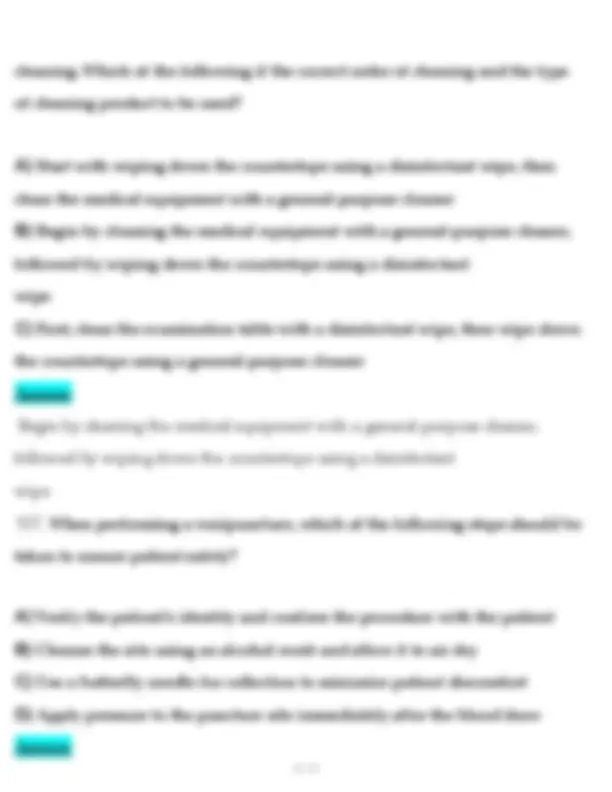
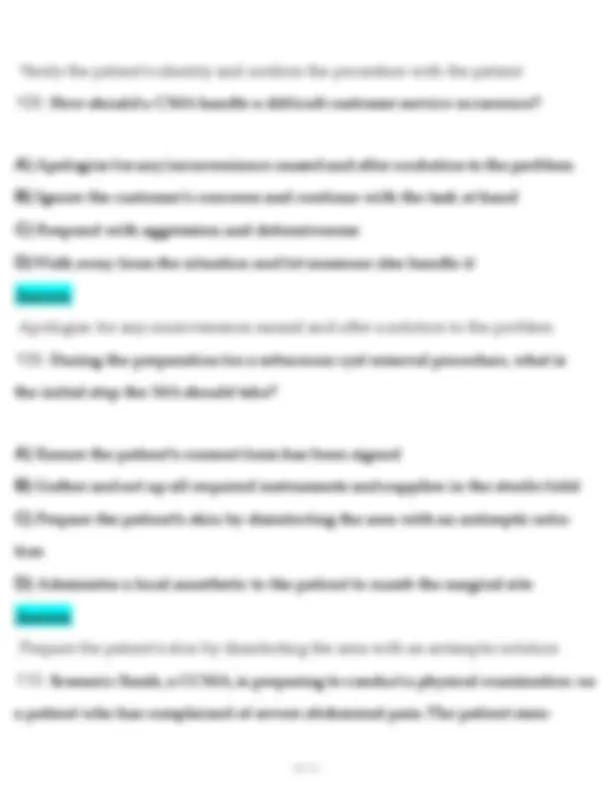
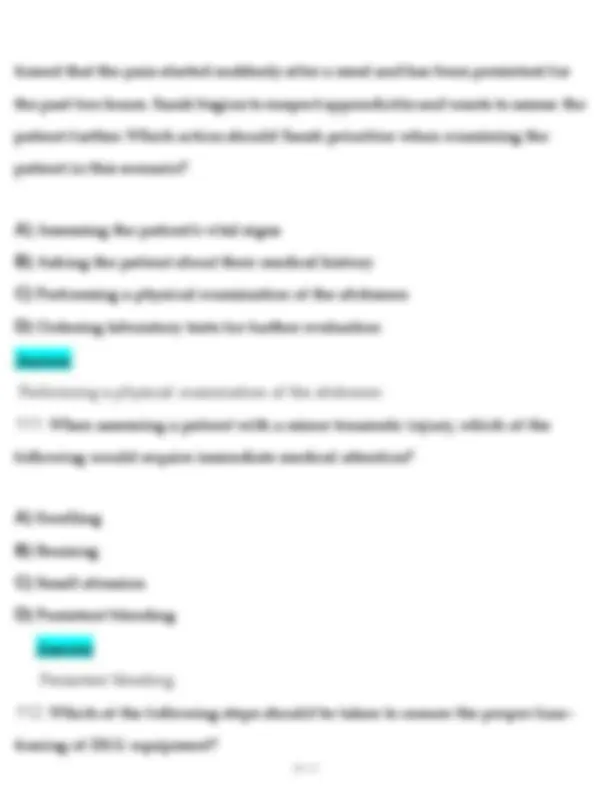
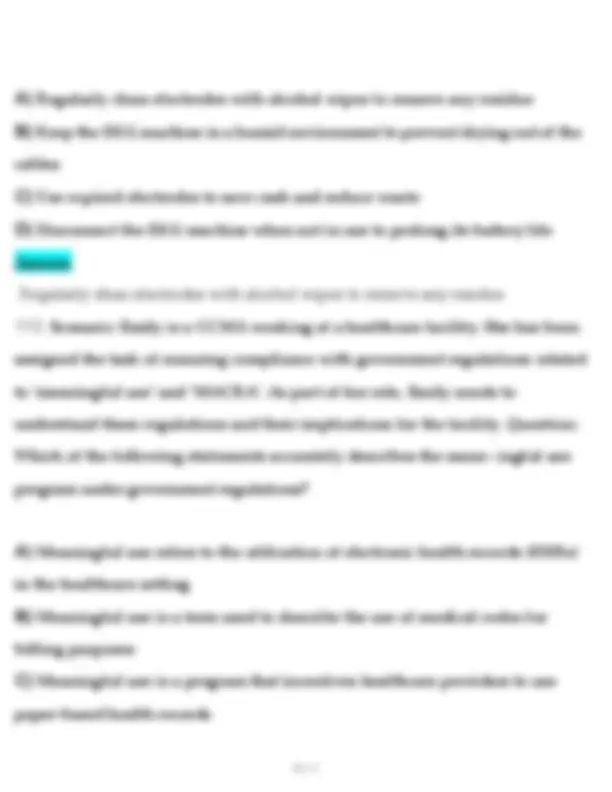

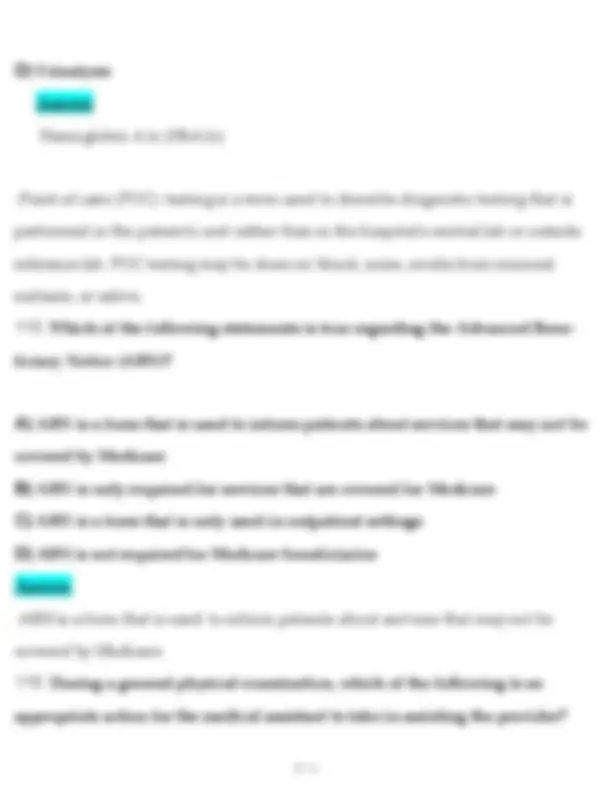

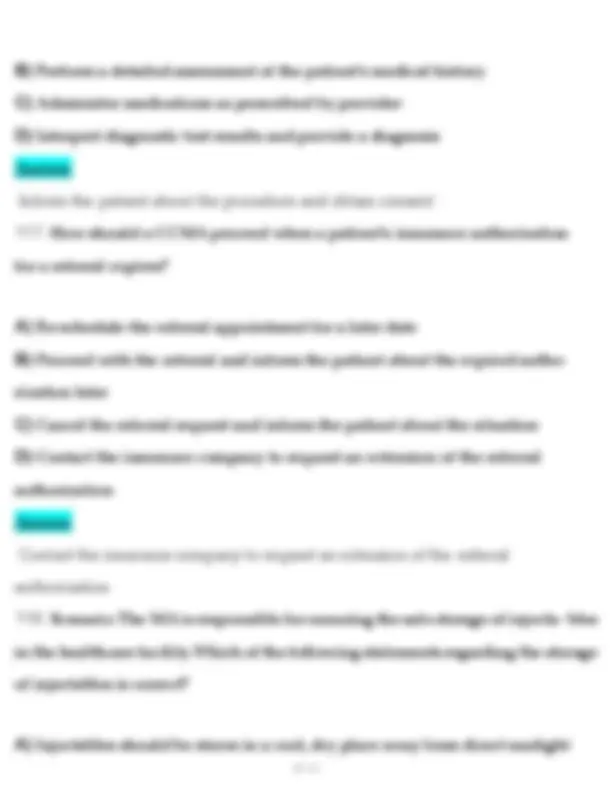
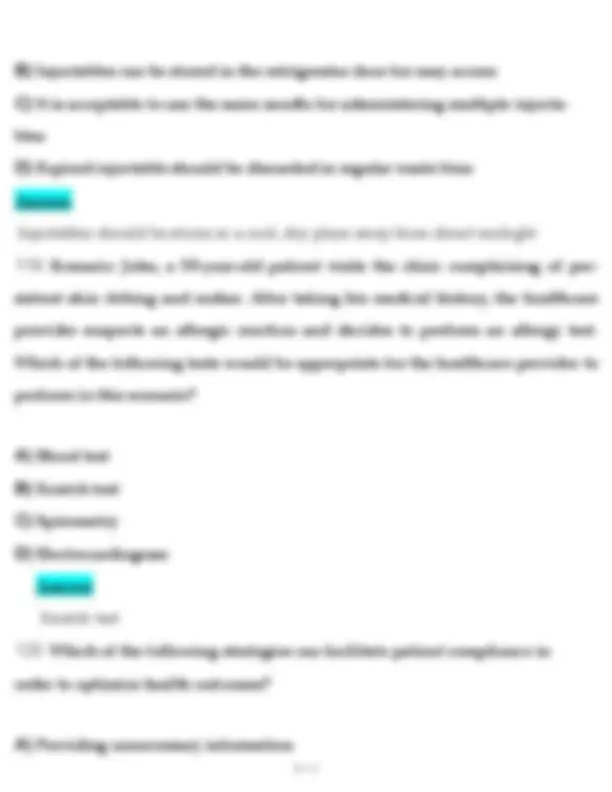
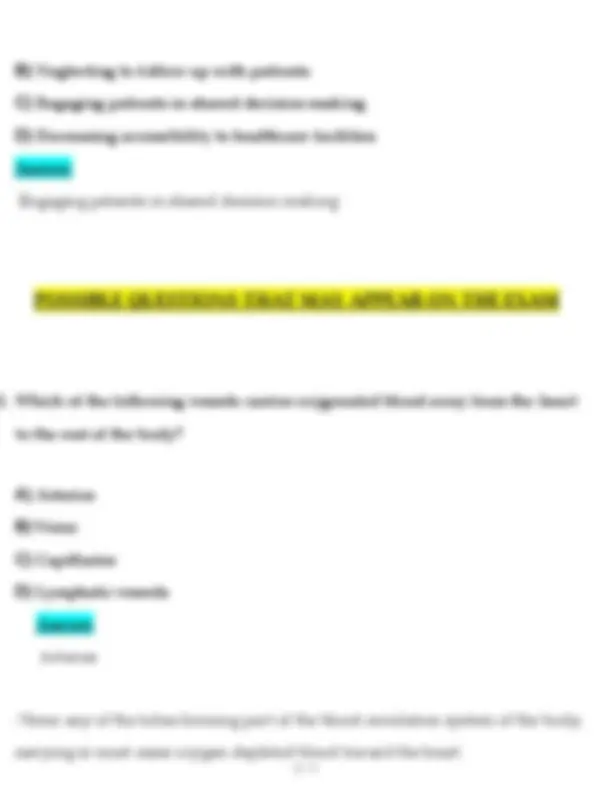
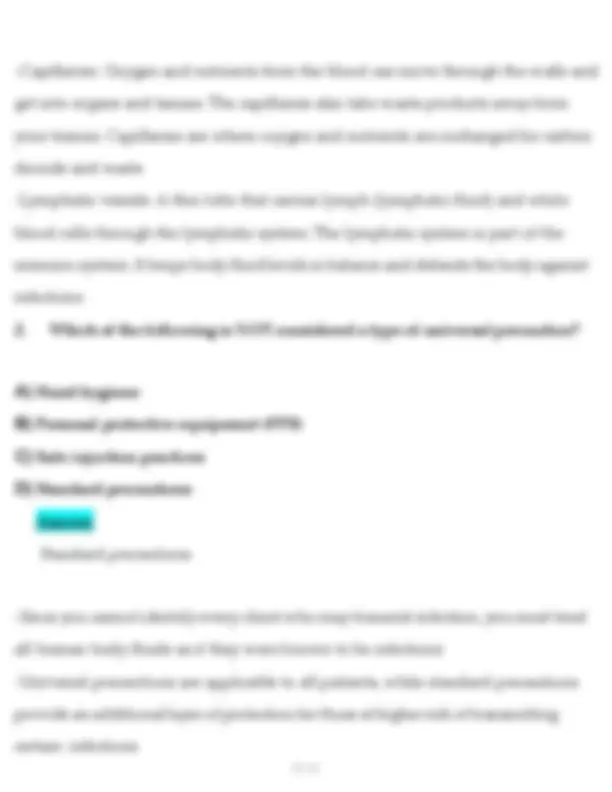
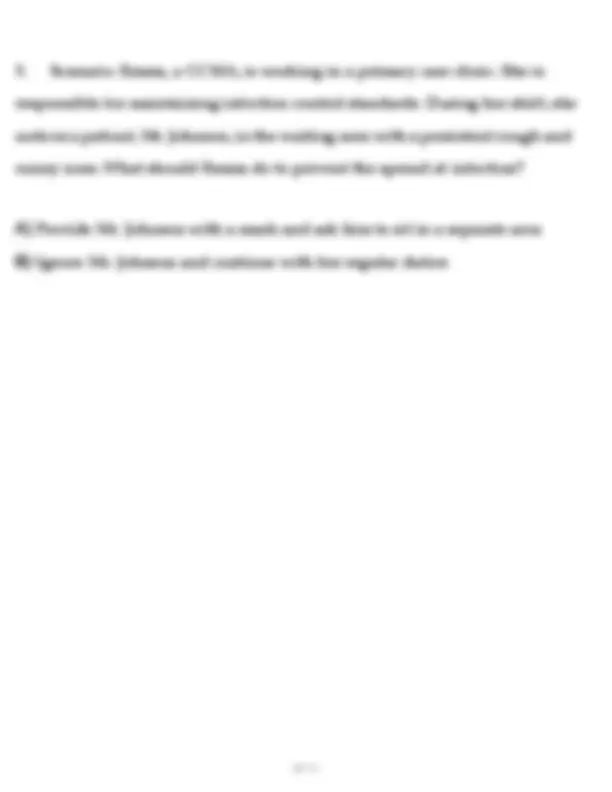
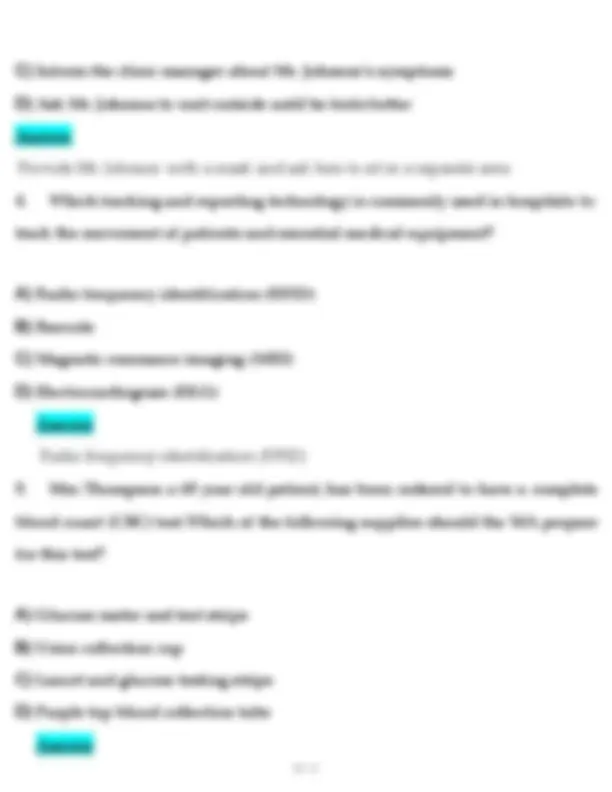
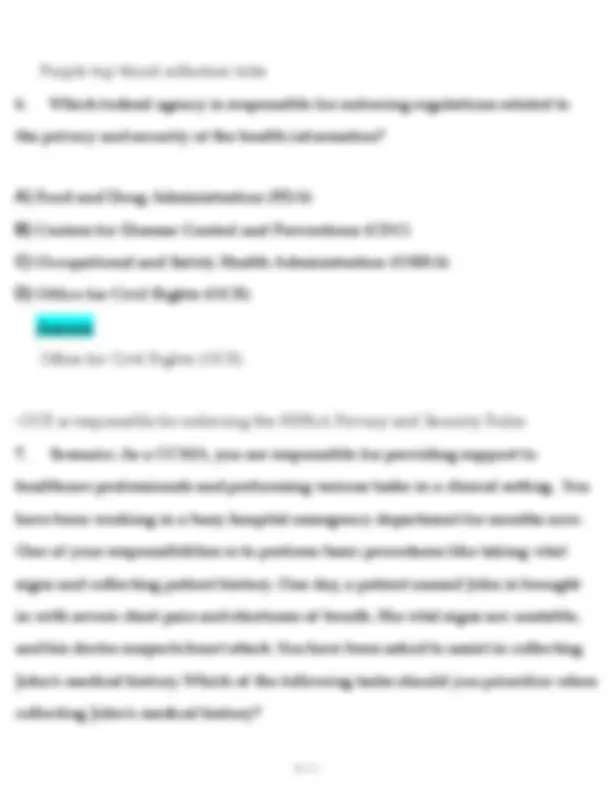

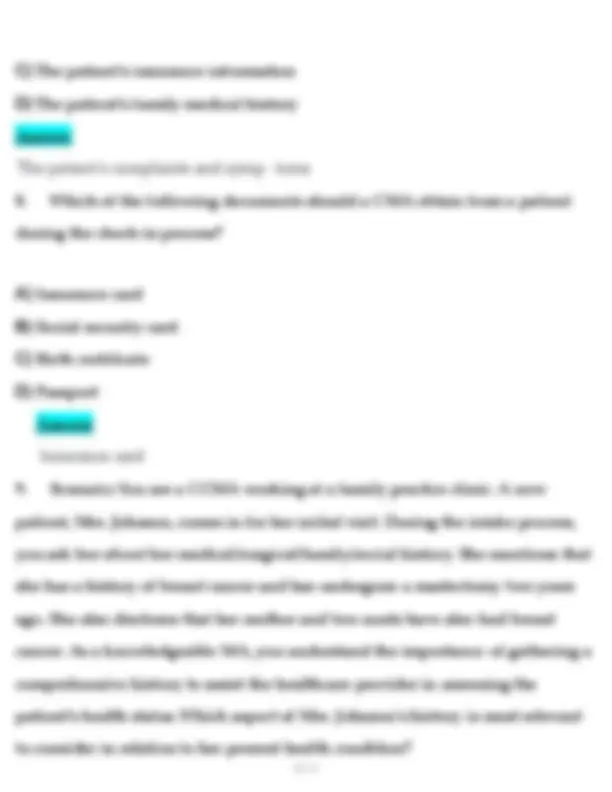
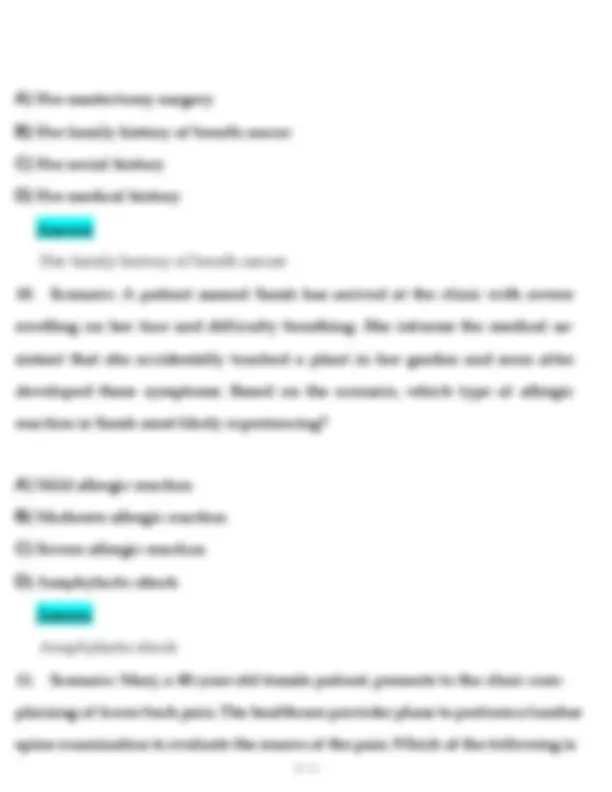

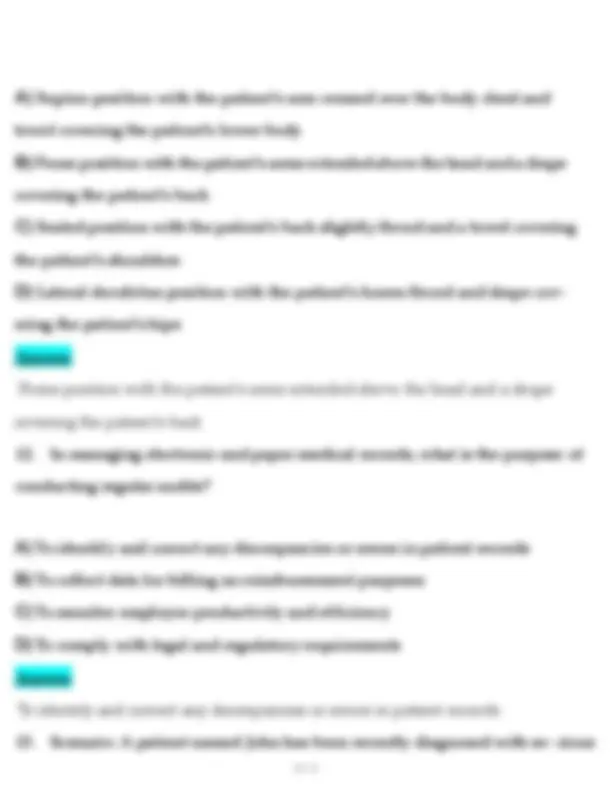
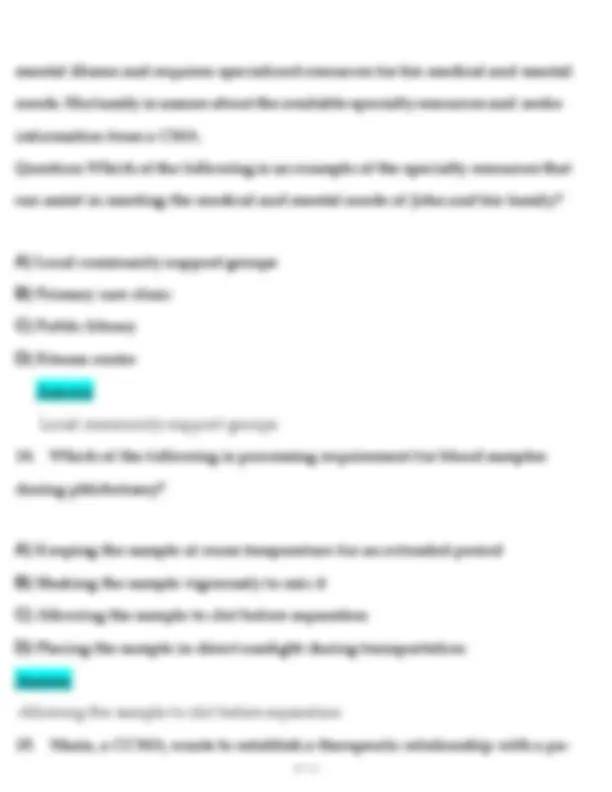

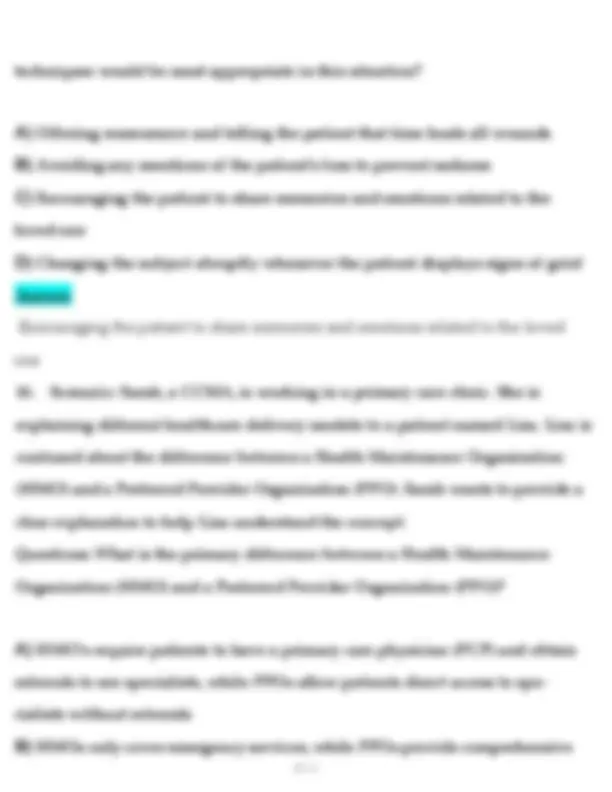
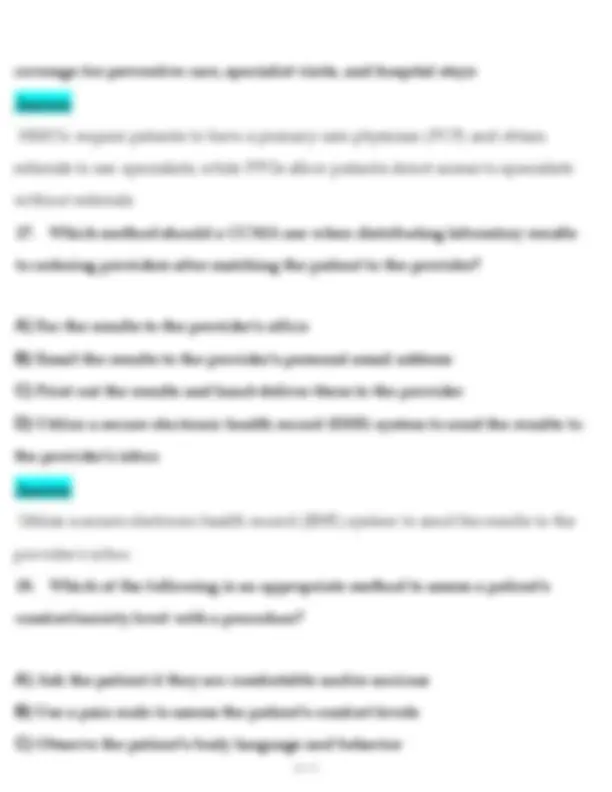
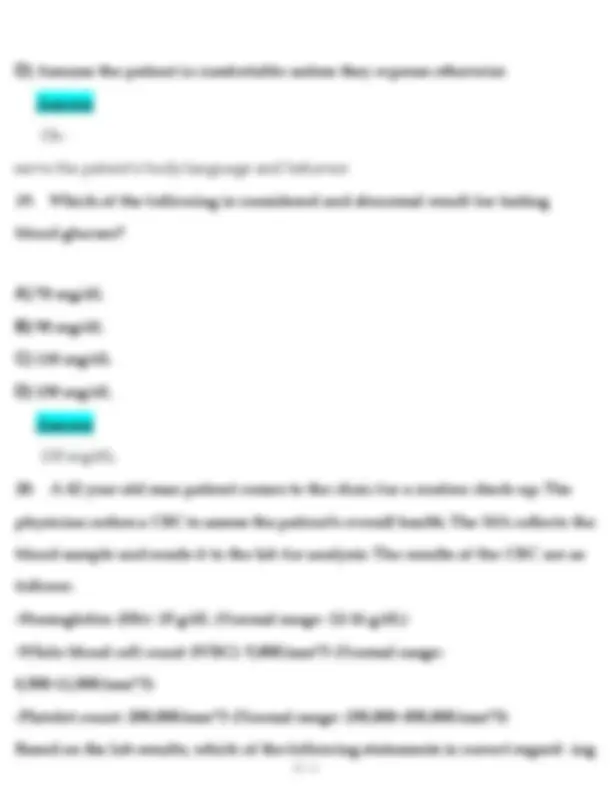
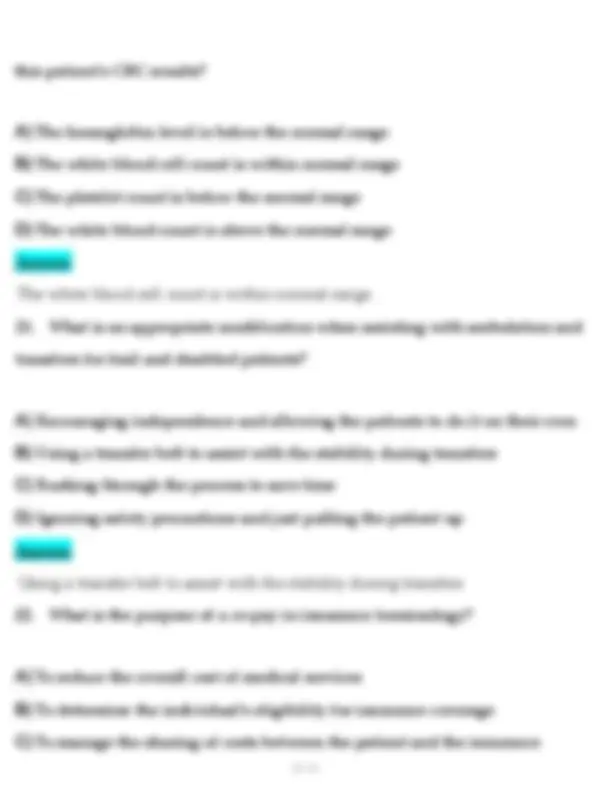

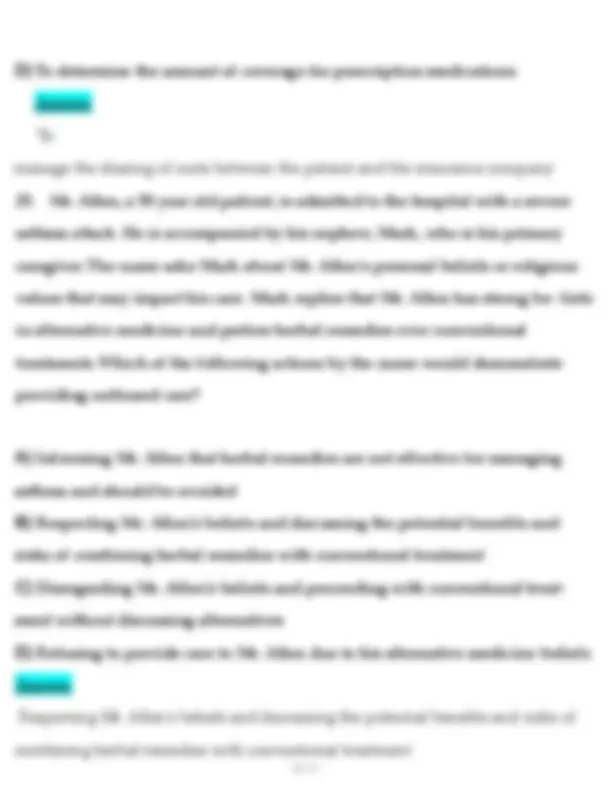


Study with the several resources on Docsity

Earn points by helping other students or get them with a premium plan


Prepare for your exams
Study with the several resources on Docsity

Earn points to download
Earn points by helping other students or get them with a premium plan
Community
Ask the community for help and clear up your study doubts
Discover the best universities in your country according to Docsity users
Free resources
Download our free guides on studying techniques, anxiety management strategies, and thesis advice from Docsity tutors
Comprehensive study guide for the NHA Certified Billing and Coding Specialist (CBCS) exam. Covers medical billing, coding systems (CPT, ICD-10, HCPCS), claims processing, HIPAA regulations, and insurance terminology. Ideal for students preparing for NHA certification. nhacbcs guide, medical billing exam, coding specialist study, cpt icd10 hcpcs, nha exam prep, billing coding certification, healthcare claims quiz, cbcs test questions, hipaa study guide, nha certification workbook
Typology: Exams
1 / 104

This page cannot be seen from the preview
Don't miss anything!





























































































A) It refers to the complete elimination of all microorganisms from and area or surface B) It involves the use of sterile techniques to prevent the transmission of microorganisms C) It focuses on the maintenance of a sterile environment during surgical procedures D) It aims to reduce the number of microorganisms and prevent their spread-
Answer It aims to reduce the number of microorganisms and prevent their spread
This is achieved through practices such as hand hygiene, using gloves, disinfecting surfaces, and proper handling of contaminated items.
A) Process the order without questioning the dosage B) Consult with another physician about the dosage C) Discuss her concerns with Dr. Johnson D) Contact the patient's family for verification Answer Discuss her concerns with Dr. Johnson
A) Apply a tourniquet to stop the bleeding B) Wash the wound with soap and water C) Apply direct pressure to the wound with a clean cloth
A) Provide the patient with a detailed written instruction booklet B) Verbally explain the post-operative instructions to the patient C) Schedule a follow-up appointment for the patient before they leave the hospital D) Encourage the patient to ask questions about their care plan Answer Encourage the patient to ask questions about their care plan
It promotes active involvement and understanding
A) Speak louder to ensure the patient can hear the instructions clearly B) Write down the instructions using a large font size C) Ask another staff member to communicate with the patient instead D) Assume the patient will understand the instruction without any modifica- tion Answer
Write down the instructions using a large font size
Allows the patient to read the independently or with the assistance of a magnifying tool.
A) Date: 12/10/2021; Time 8:30 AM
-Urgent care; handles acute illnesses and minor injuries that do not require ongoing care -Outpatient clinics; provide medical services on an outpatient basis -Primary care physician's offices primarily focus on routine medical care
A) Muscle movement B) Respiratory activity C) Patient shivering D) Poor skin preparation Answer Muscle movement
This is caused if the patient is moving, muscle artifacts can manifest as spikes or sharp waves on the EKG
administration is most commonly used for oral medications?
A) Intravenous (IV) B) Subcutaneous (SC) C) Intramuscular (IM) D) Oral (PO) Answer Oral (PO)
Oral (PO) route is the most commonly used route of administration for medication, especially for chronic conditions like hypertension. It involves taking medication by mouth, allowing for easy absorption through the digestive system. Also, effective and non-invasive.
IV, SC, IM; bypasses digestive system and are often used for medications requiring rapid or precise effects.
A) Nervi B) Radii C) Bronchuses
A) Equipment calibration is the process of adjusting the instrument to ensure that it provides accurate and reliable results B) Equipment calibration involves cleaning the device thoroughly to prevent
the spread the infections C) Equipment calibration is the process of discarding and replacing old equip- ment with new ones D) Equipment calibration involves training healthcare staff on how to operate the device correctly Answer Equipment calibration is the process of adjusting the instrument to ensure that it provides accurate and reliable results
Calibration means adjusting
A) Stethoscope B) MRI machine C) Electrocardiogram (EKG) machine D) Crutches Answer Stethoscope
-Allows for a time-dependent analysis to assess variations throughout the day or in response to medication -A timed specimen collection refers to the collection of a biological sample at a specific time to monitor physical changes or drug levels
A) General practitioners focus on the specific area of medicine, while special- ists treat a wide range of medical conditions B) General practitioners provide primary care for common illnesses, while specialists deal with complex medical conditions C) General practitioners require more extensive training than specialists D) General practitioners have more specialized knowledge than specialists Answer General practitioners provide primary care for common illnesses, while specialists deal with complex medical conditions
A) Patient's demographic information and contact details B) Reason for referral and relevant medical history C) Name and contact information of the referring healthcare provider D) All the above Answer All the above
Answer Provide Mr. Smith with
information about financial assistance programs or clinics that offer discounted rates for specialist visits
A) Administrative B) Clinical C) Procedural D) Notes Answer Administrative
A) Ask the patient to read a chart from 20 feet away and record the smallest line of letters they can consistently read B) Place the patient in a dimly lit room and shine a light source directly into their eyes C) Ask the patient to close one eye and cover the other eye with a patch D) Test only one eye at a time and record the results without informing the patient Answer Ask the patient to read a chart from 20 feet away and record the smallest line of
about it B) Providing Mrs. Anderson with education on diabetes management C) Assisting the nephrologist during the evaluation of Mrs. Anderson D) Administering medications to Mrs. Anderson to manage her symptoms Answer Scheduling the nephrology appointment and informing Mrs. Anderson about it
A) Vitamin C B) Iron C) Calcium D) Carbohydrates Answer Carbohydrates
A) SDS provide information about the hazards of a chemical product B) SDS provide instruction on the appropriate personal products safely C) SDS provide information on the appropriate personal protective equipment (PPE) to use D) SDS provide guidance on the disposal of chemical products
Answer SDS provide information about the hazards of a chemical product
A) To ensure the patient is aware of the treatment cost B) To guarantee that the physician is protected from legal consequences C) To allow the patient to make an autonomous decision about their healthcare D) To provide an opportunity for the patient to decline treatment without consequences Answer To allow the patient to make an autonomous decision about their healthcare